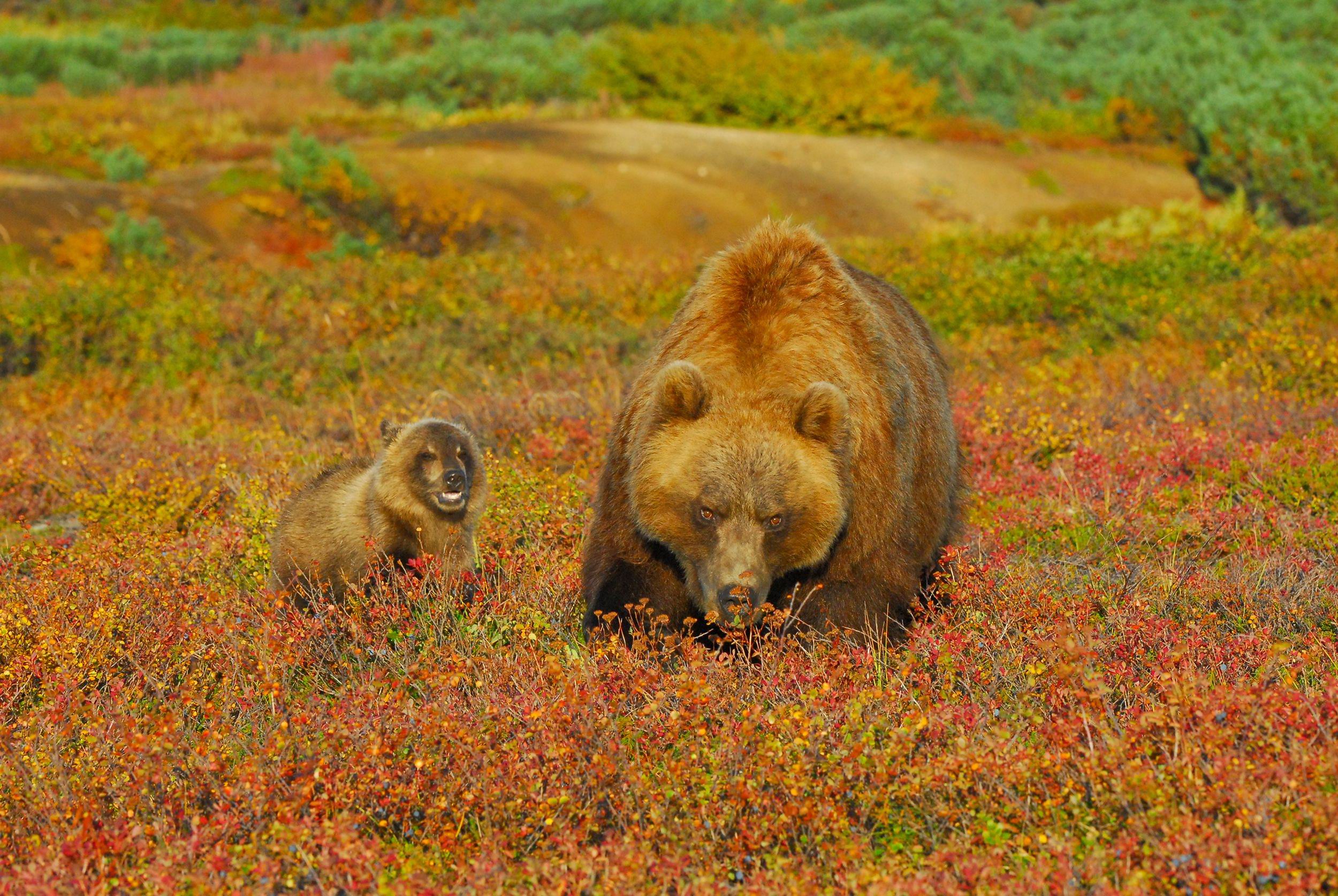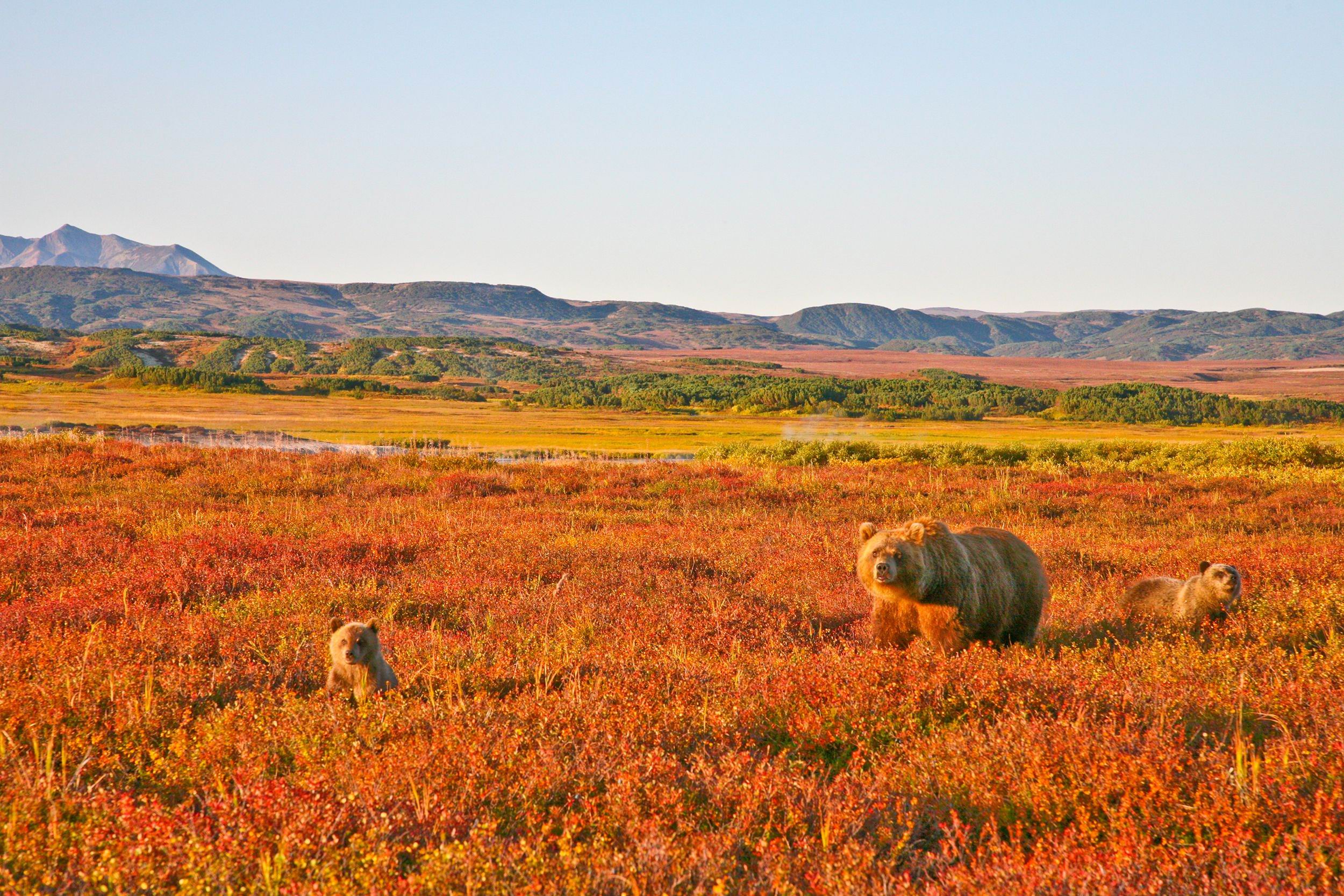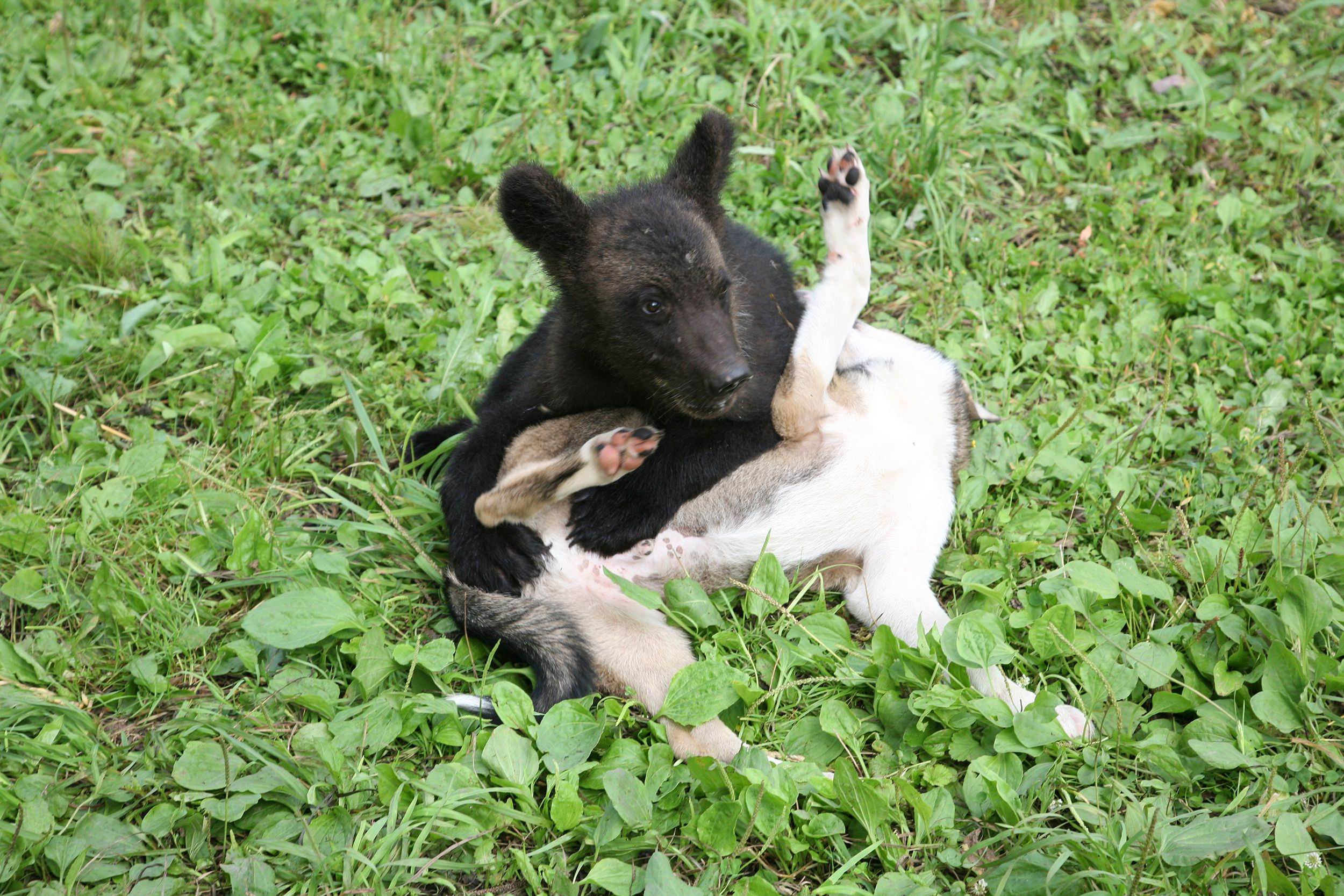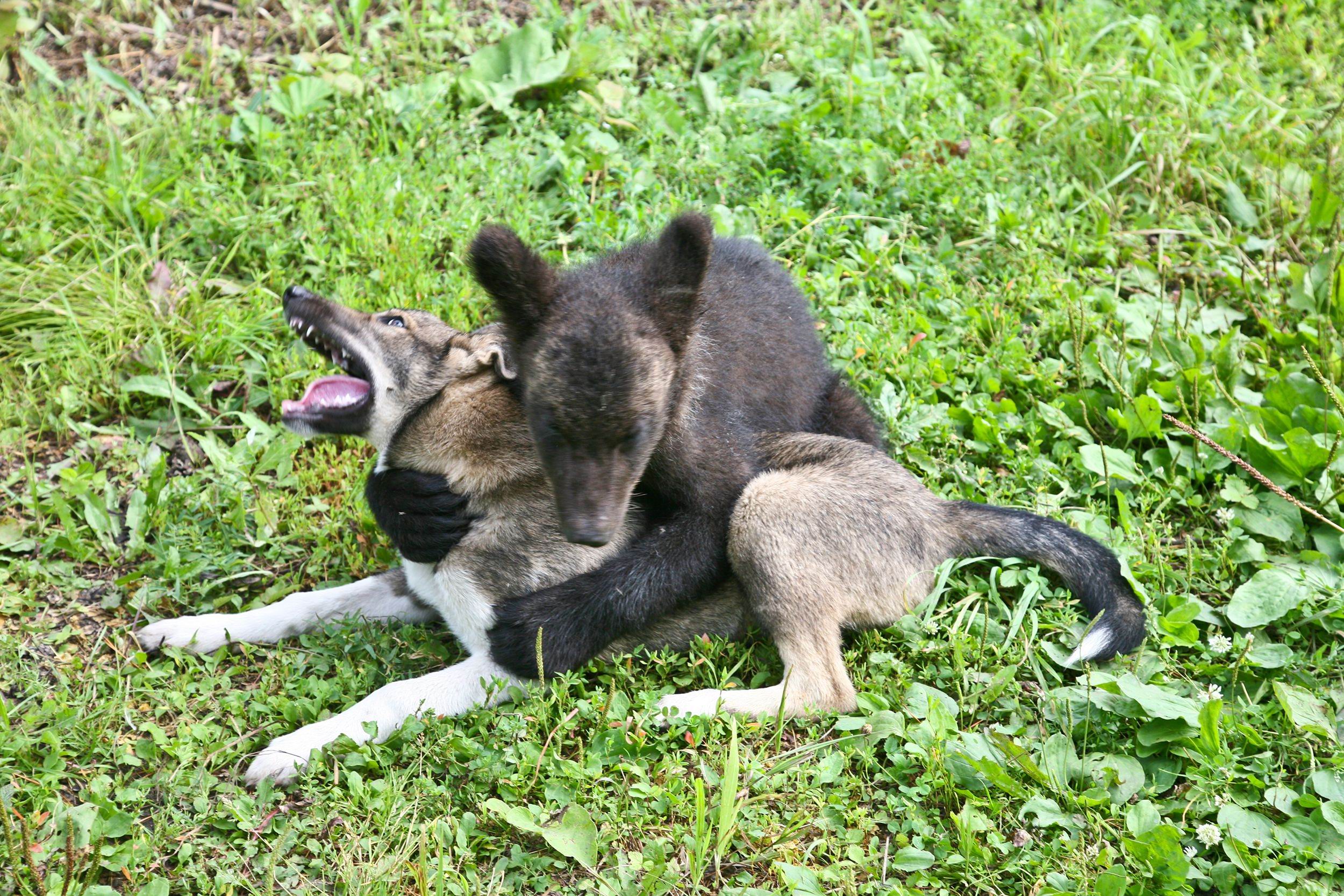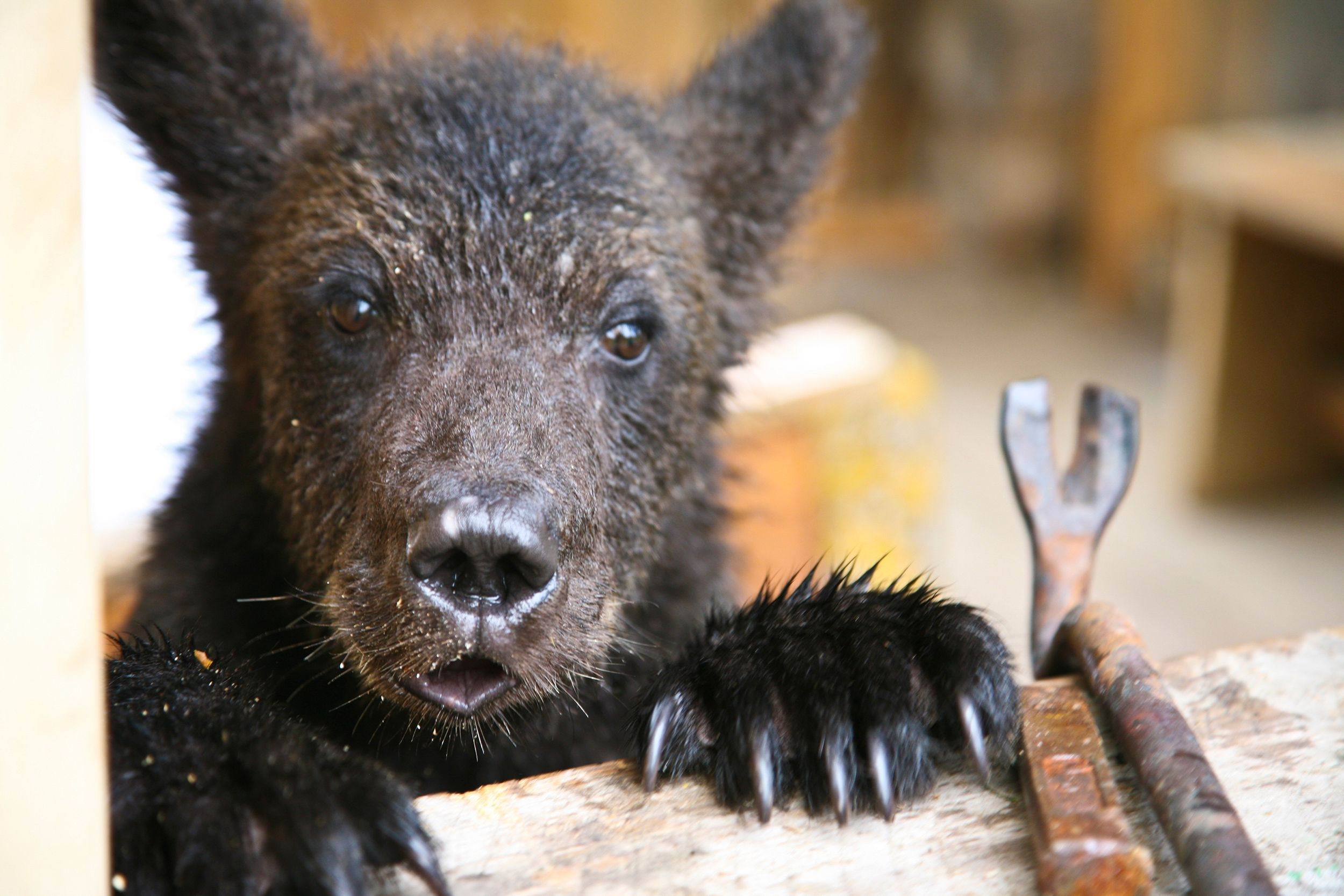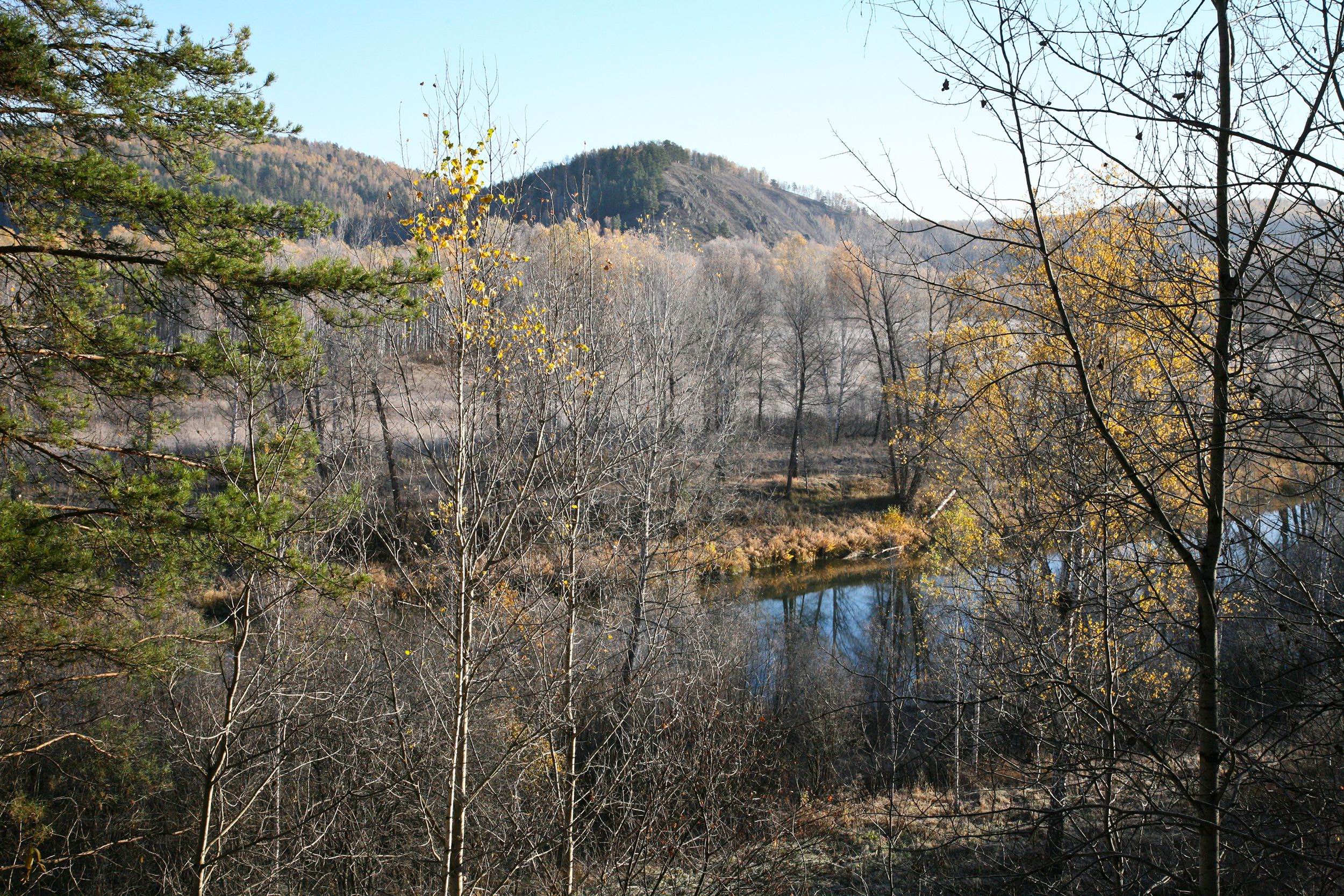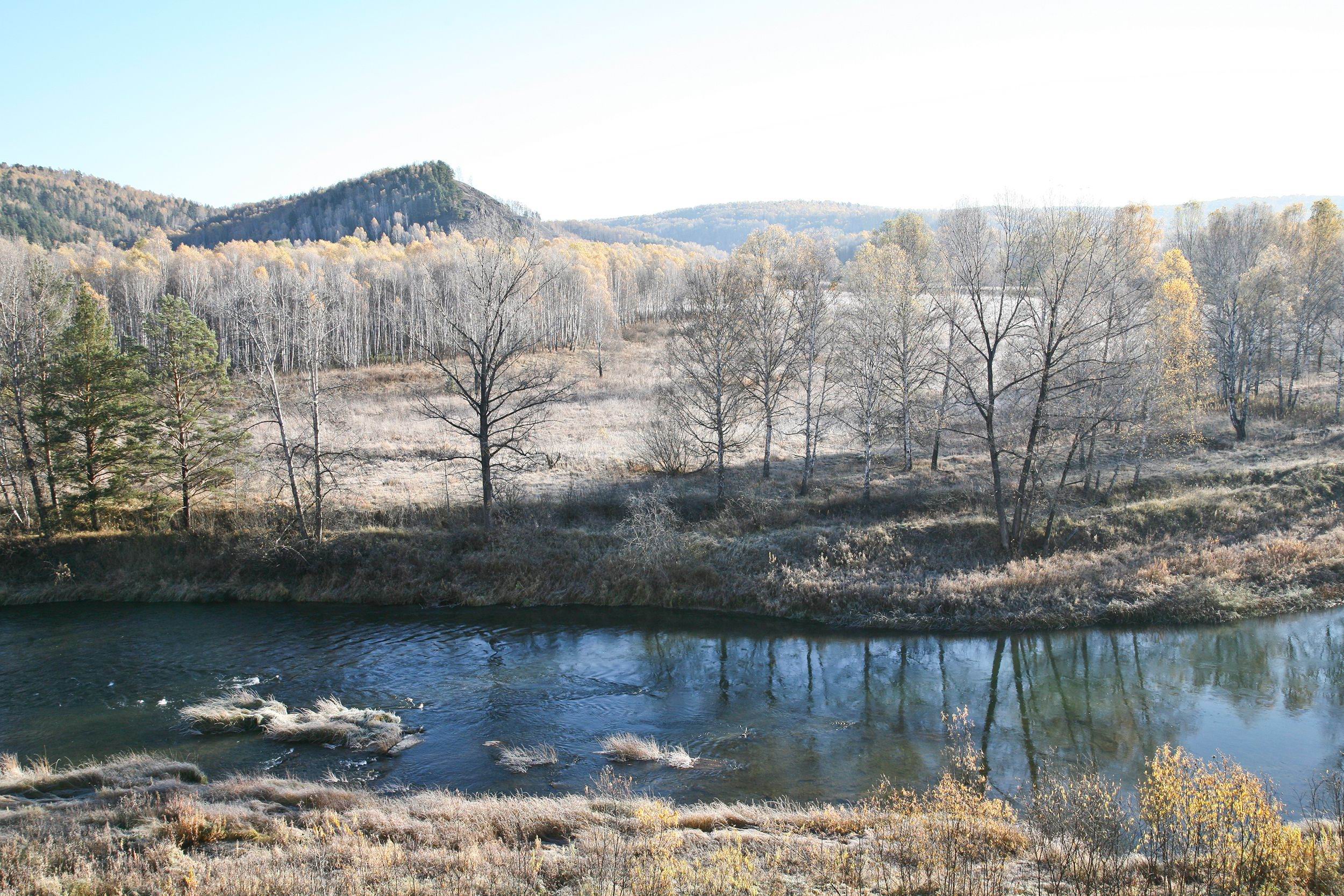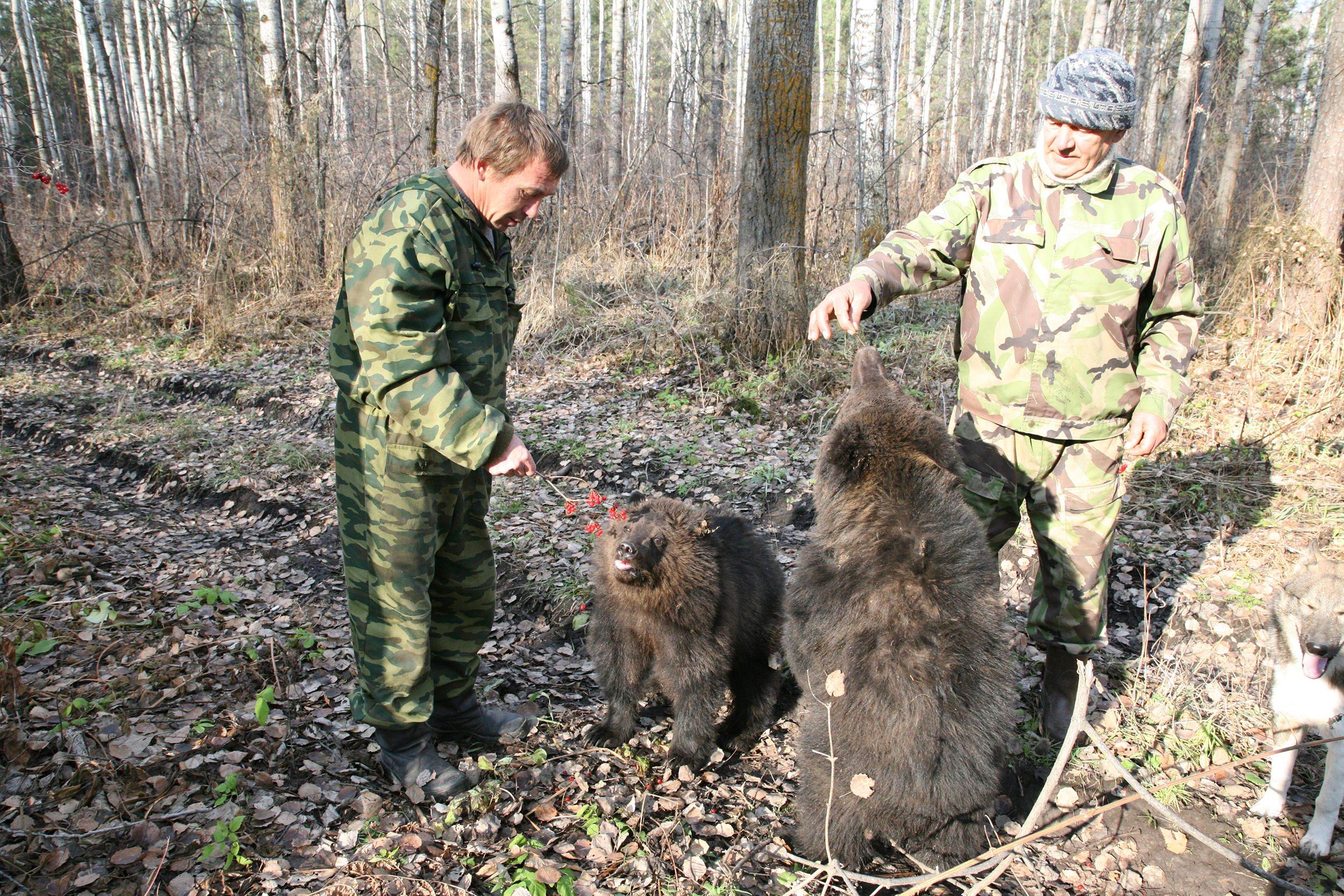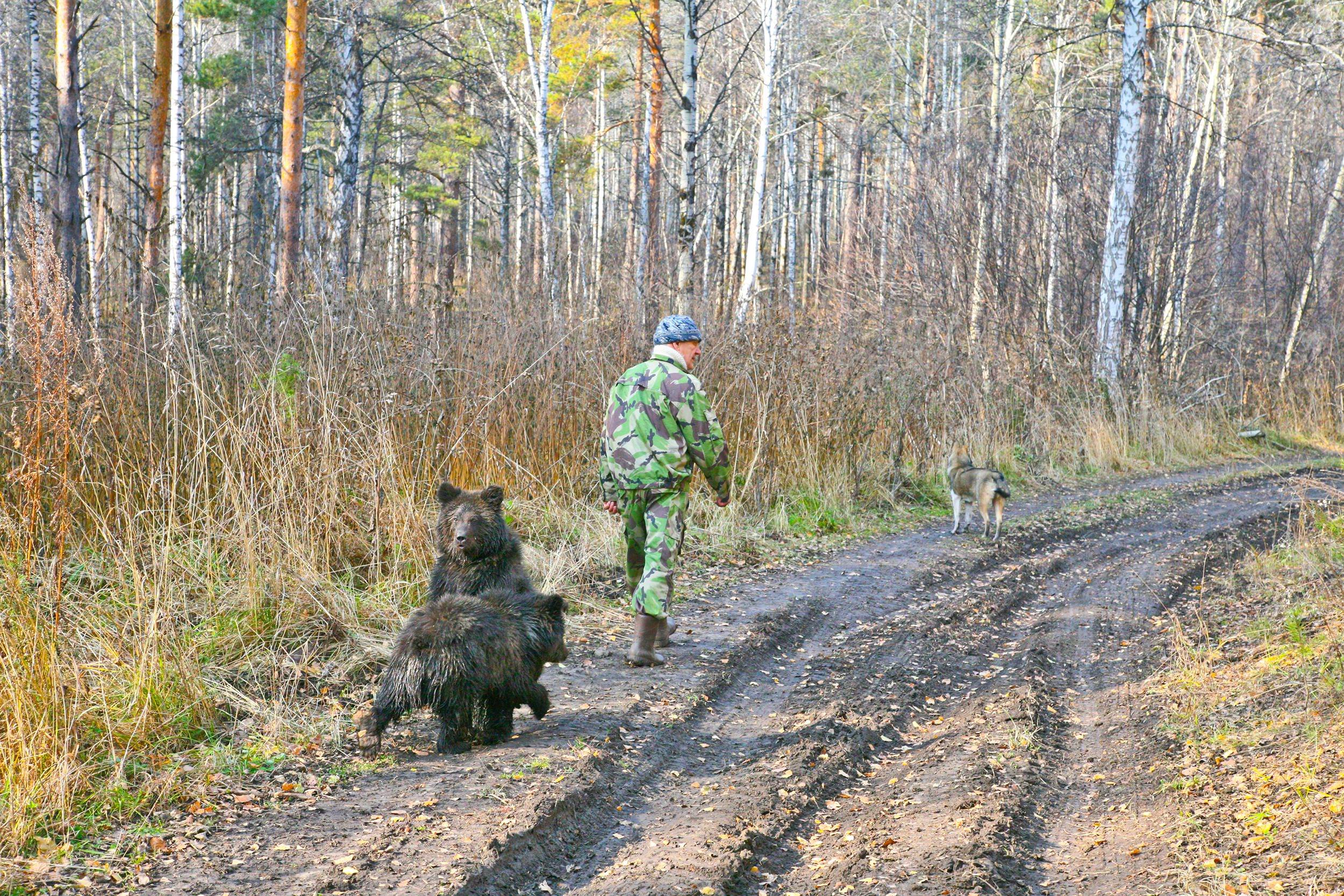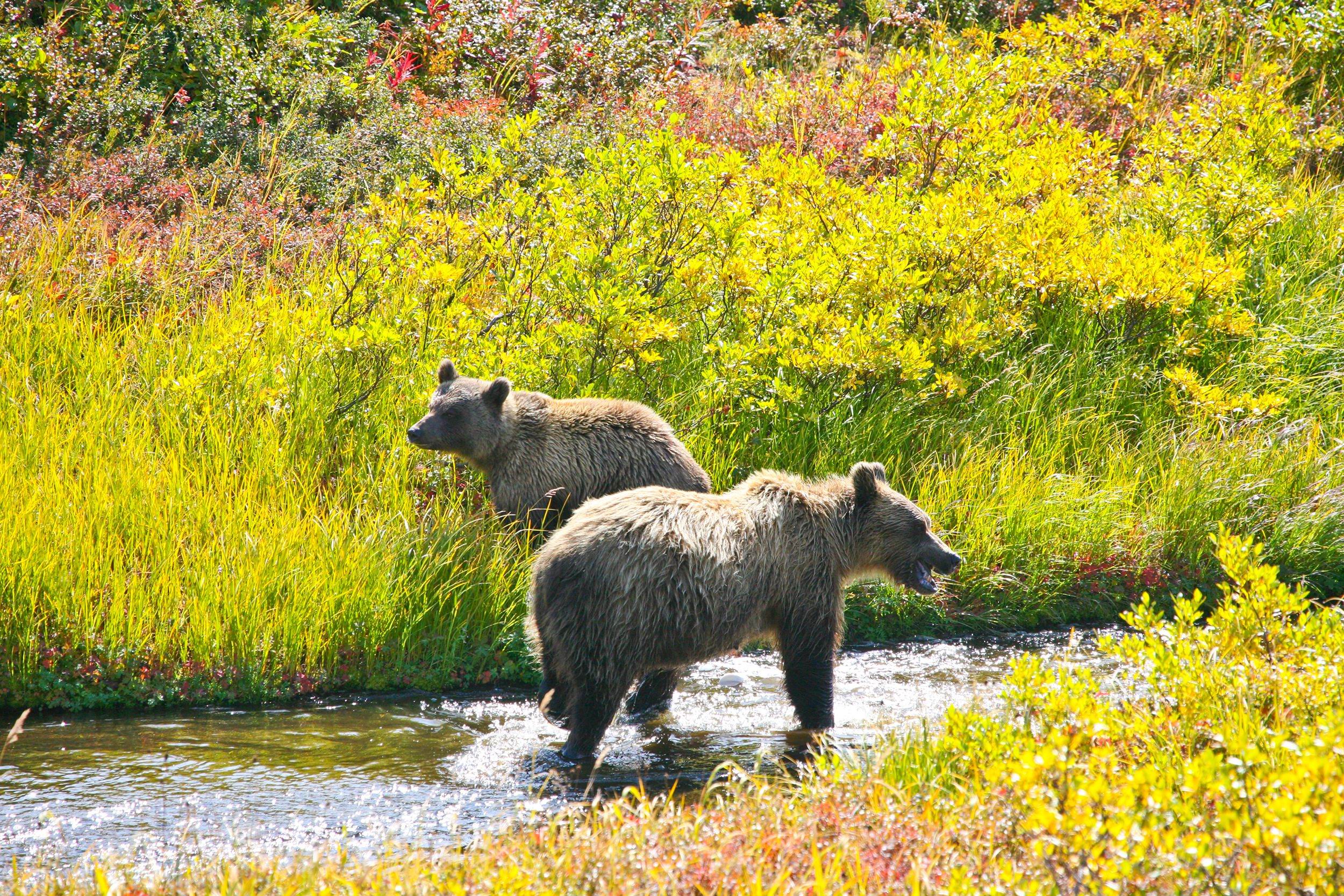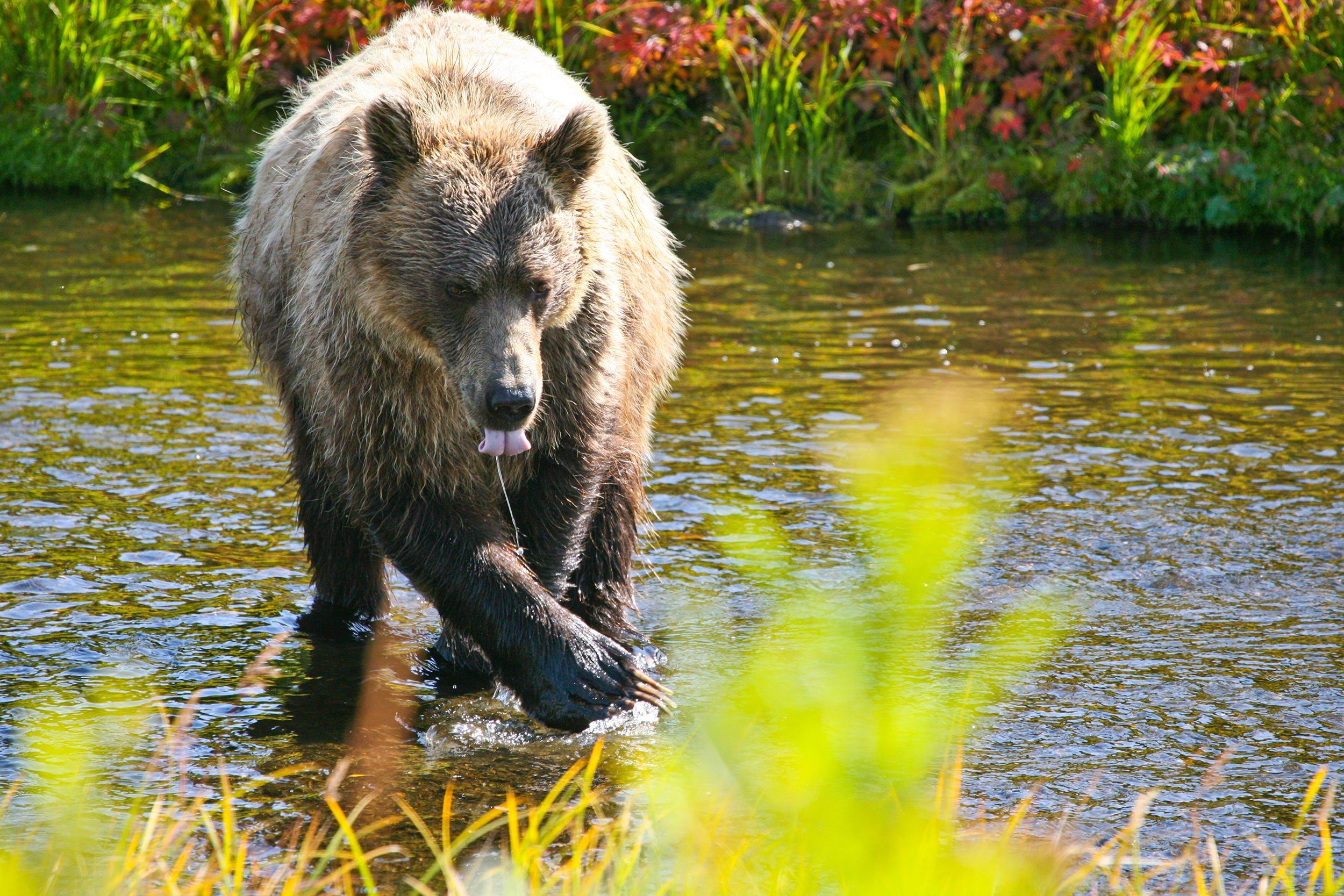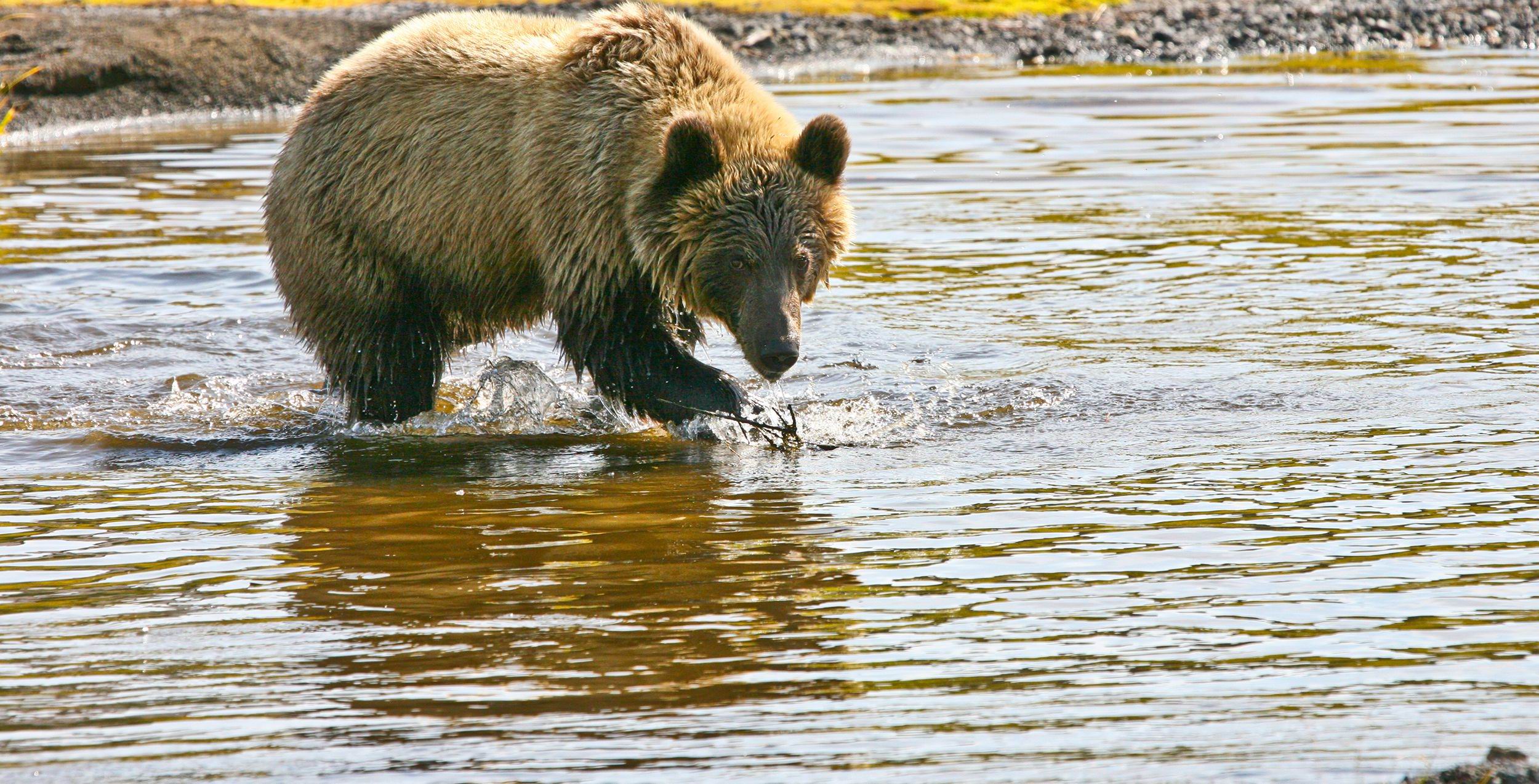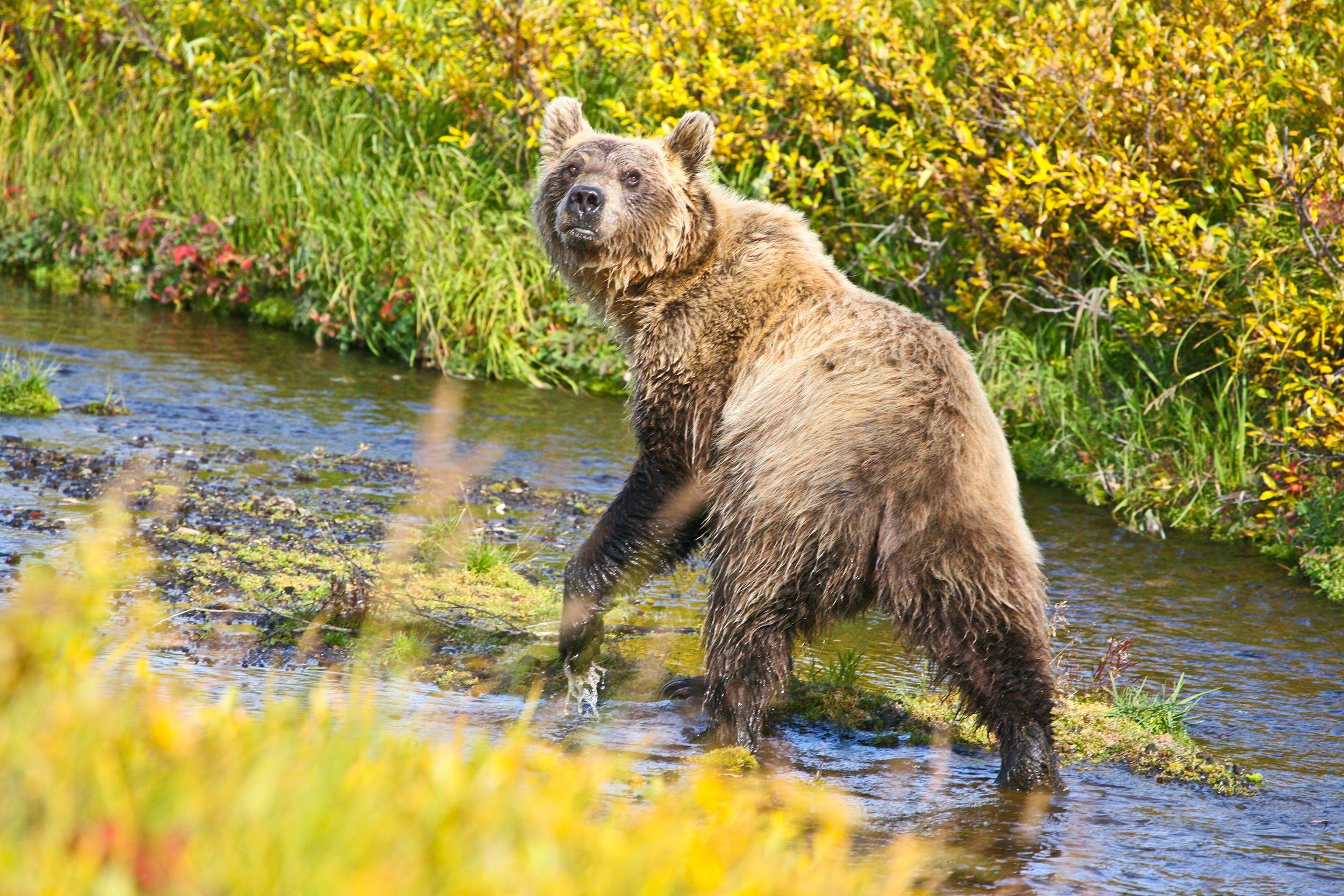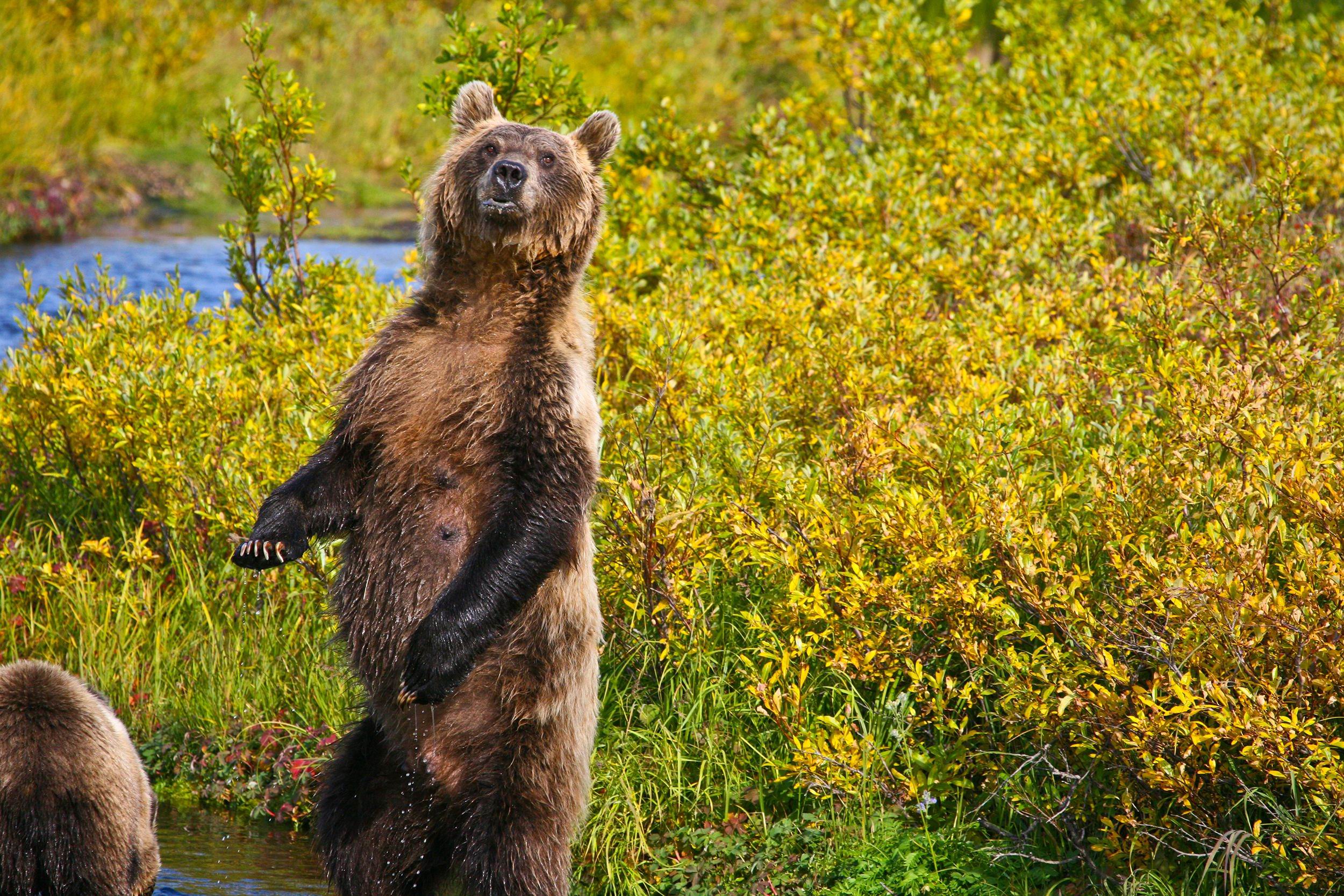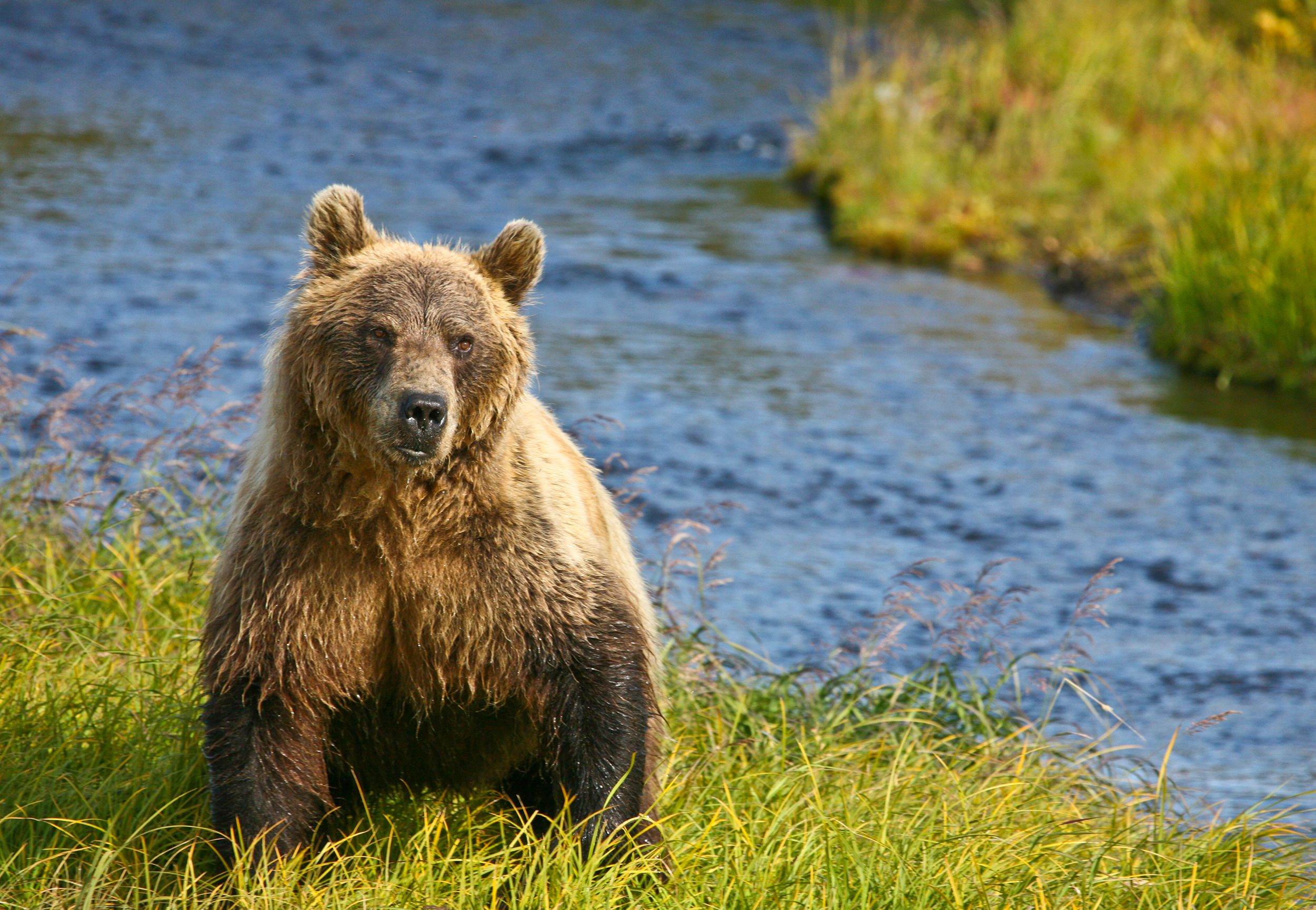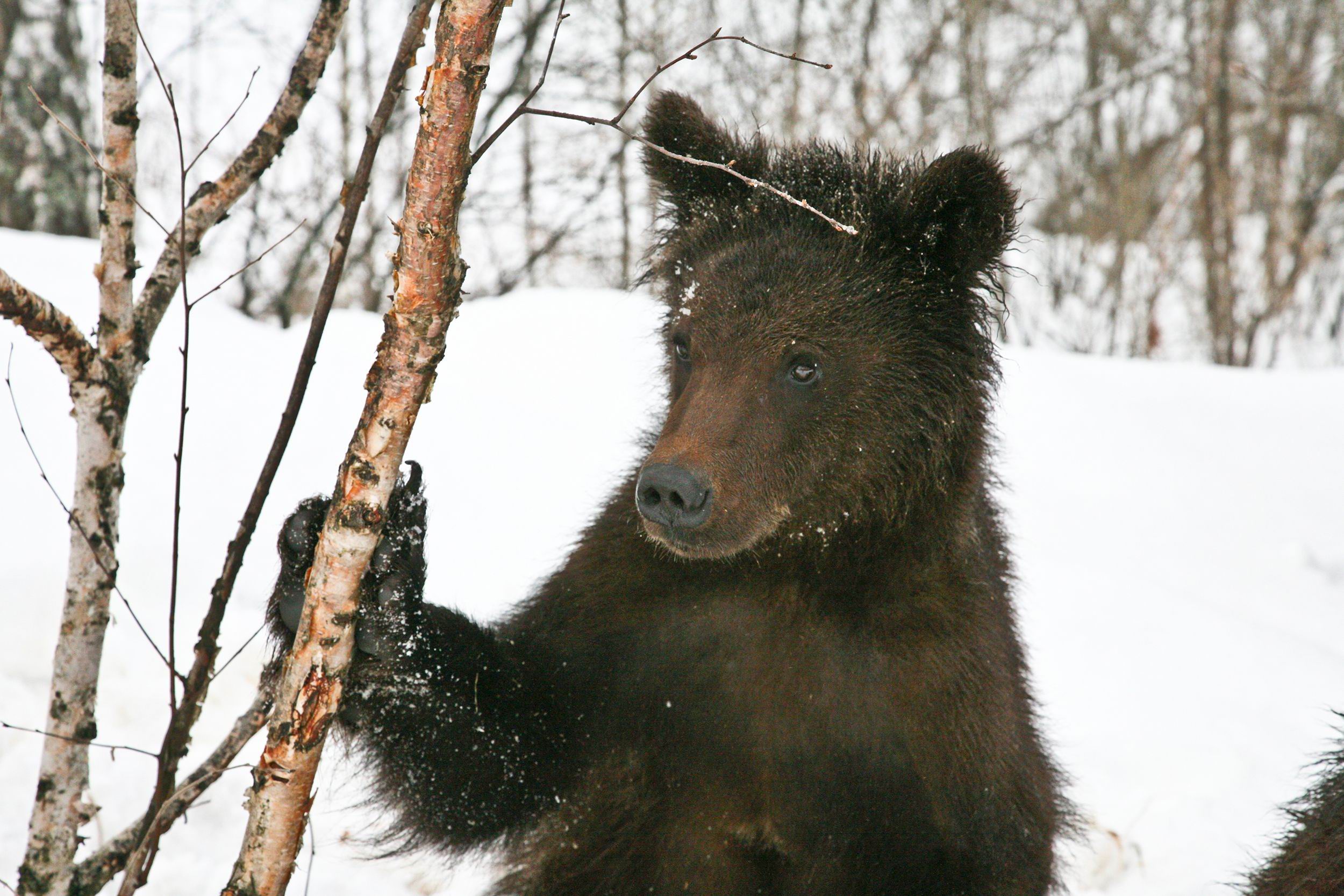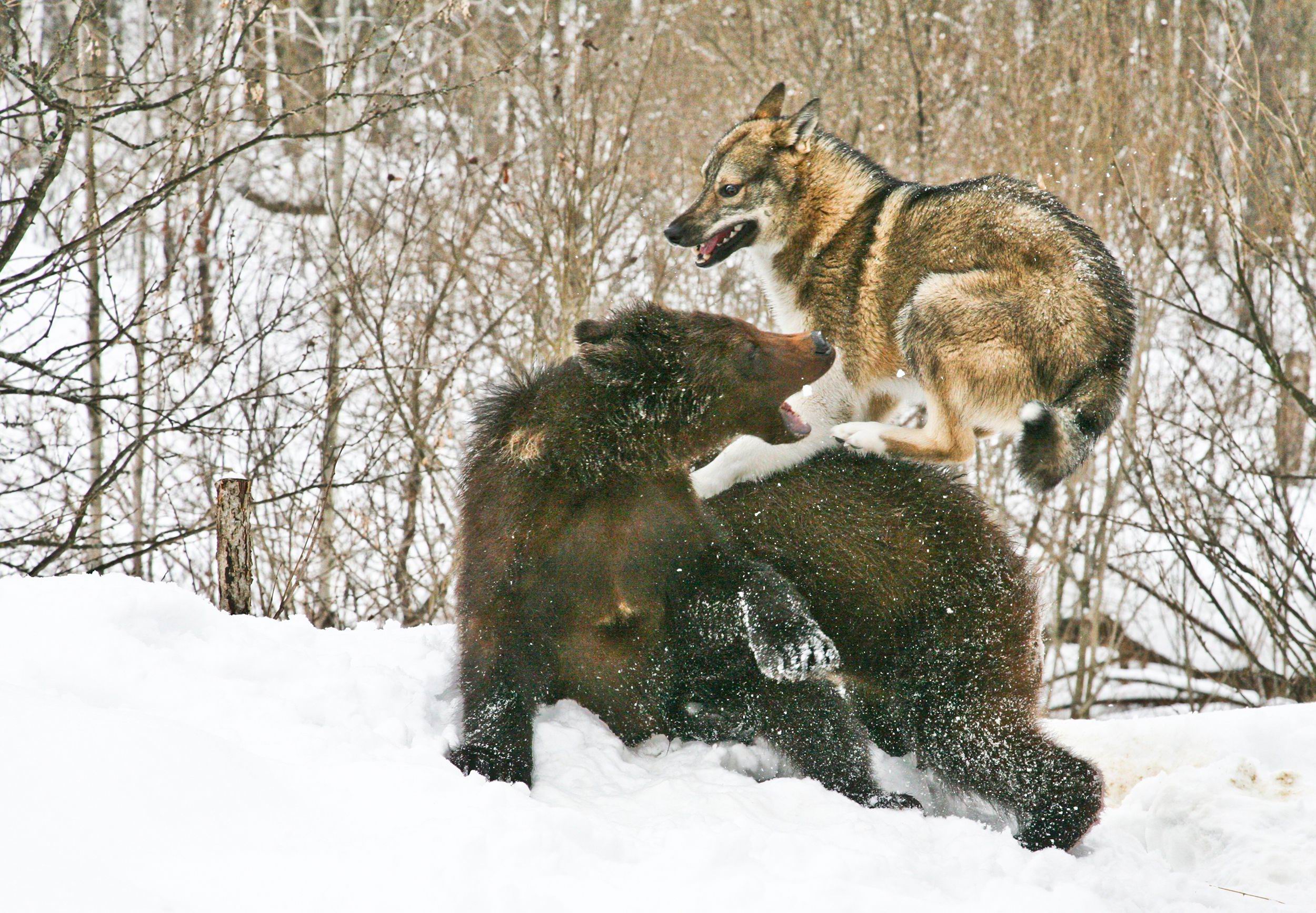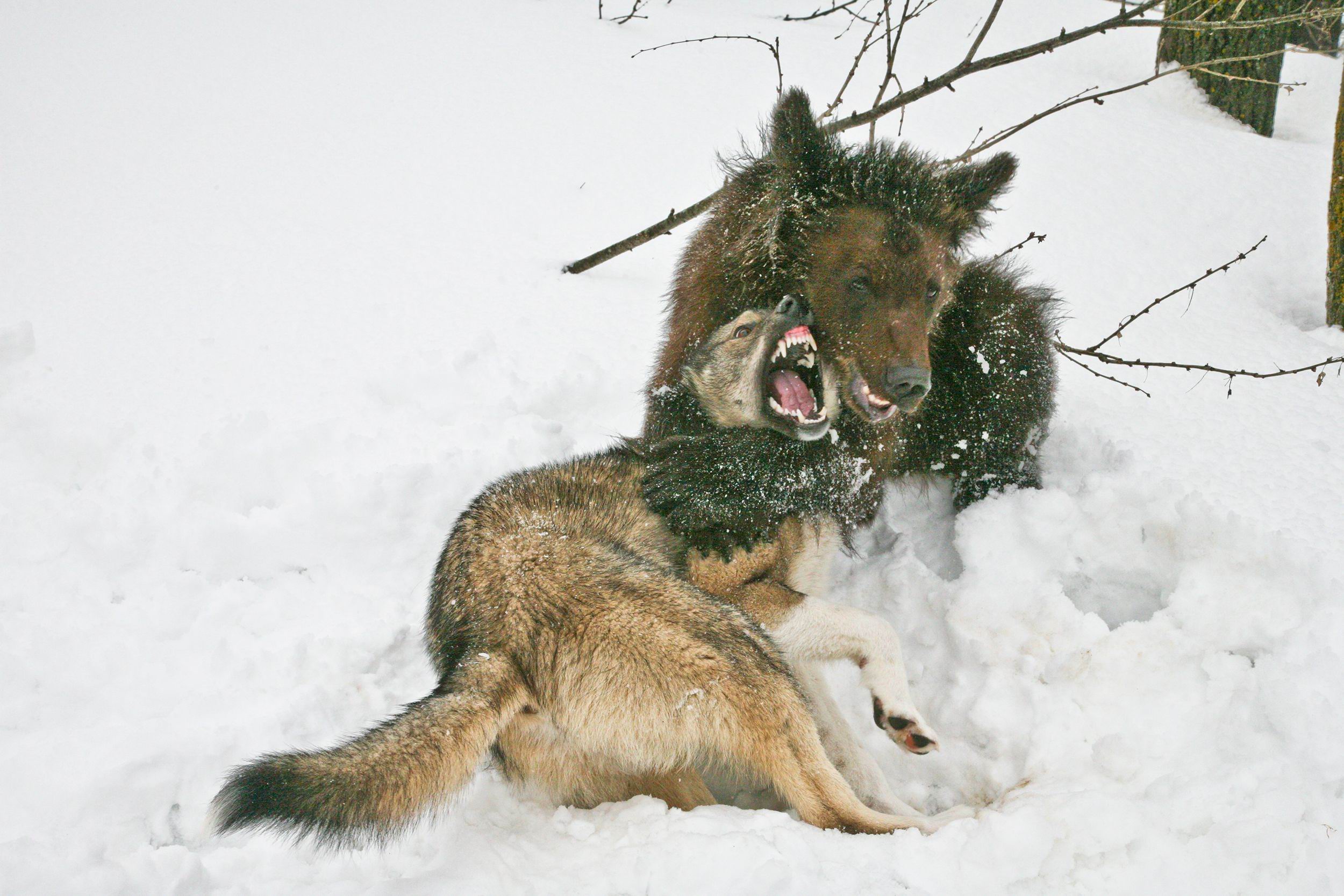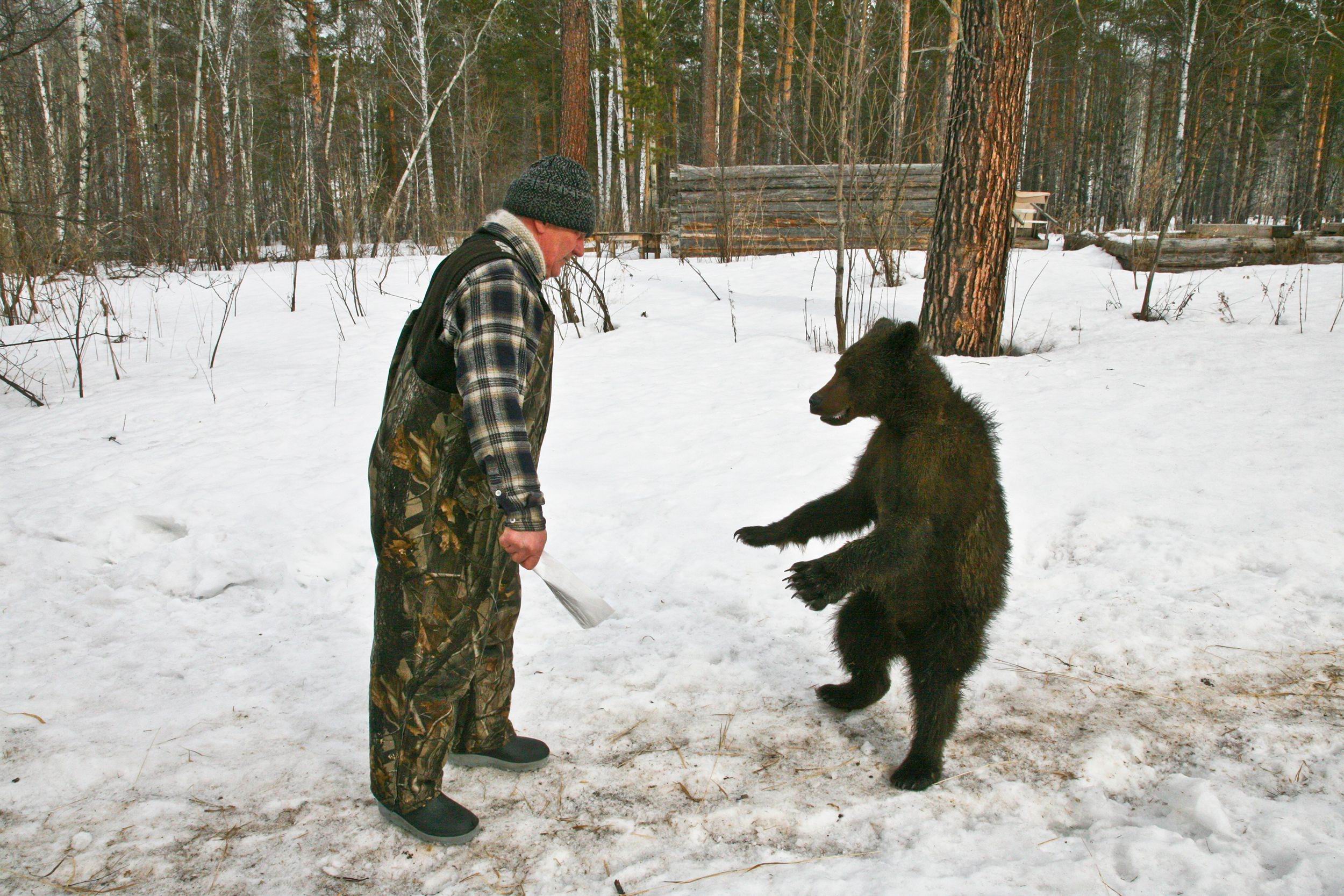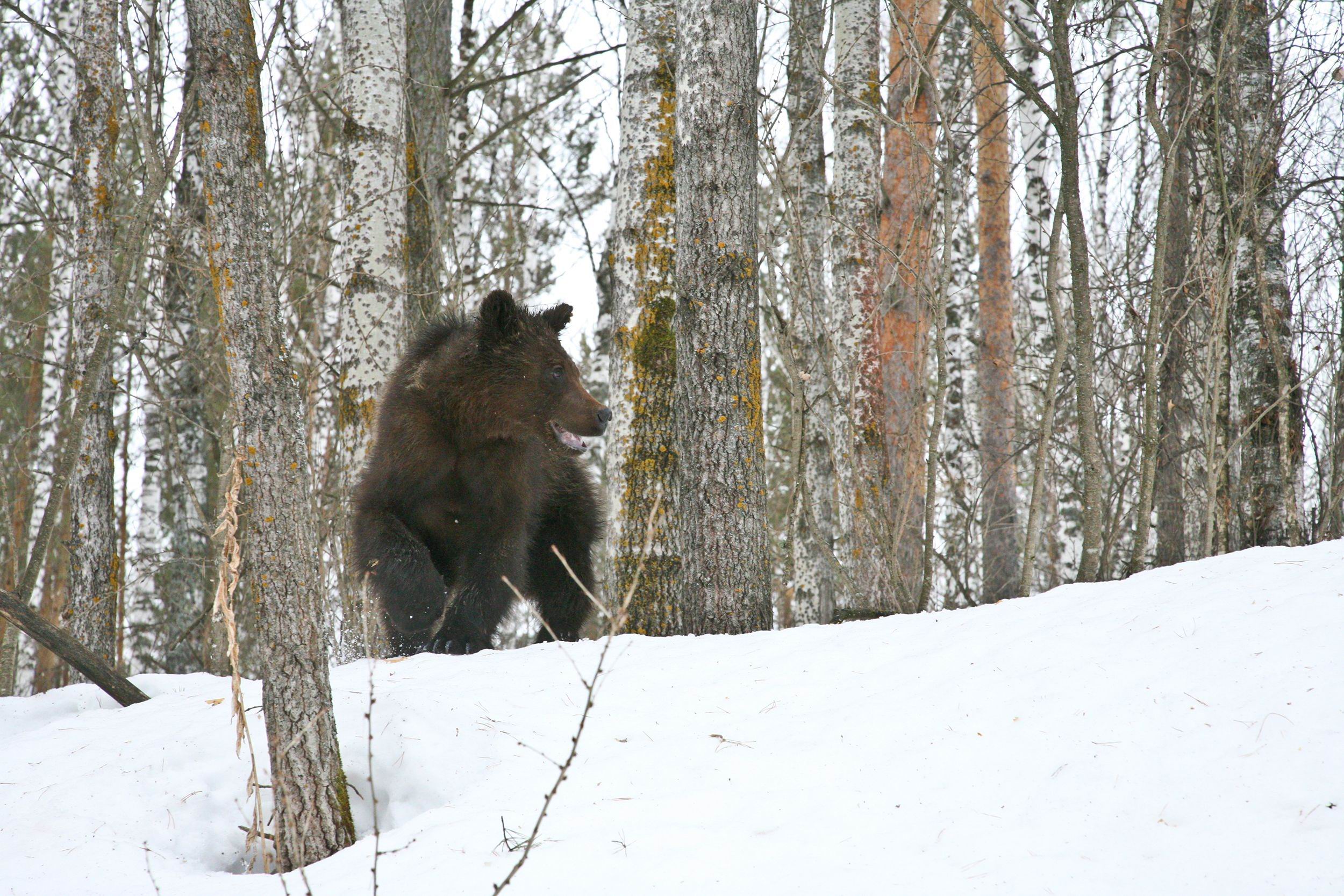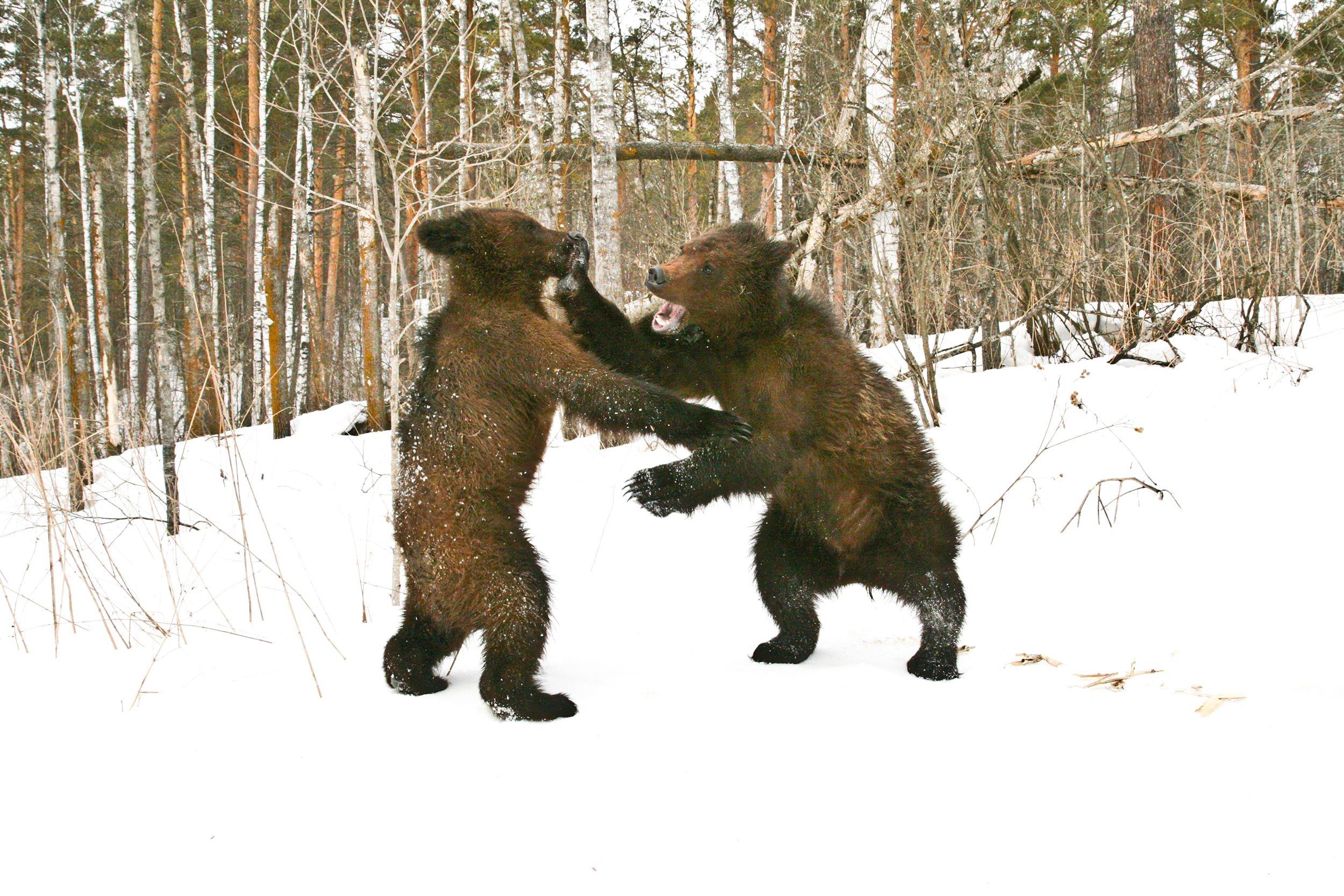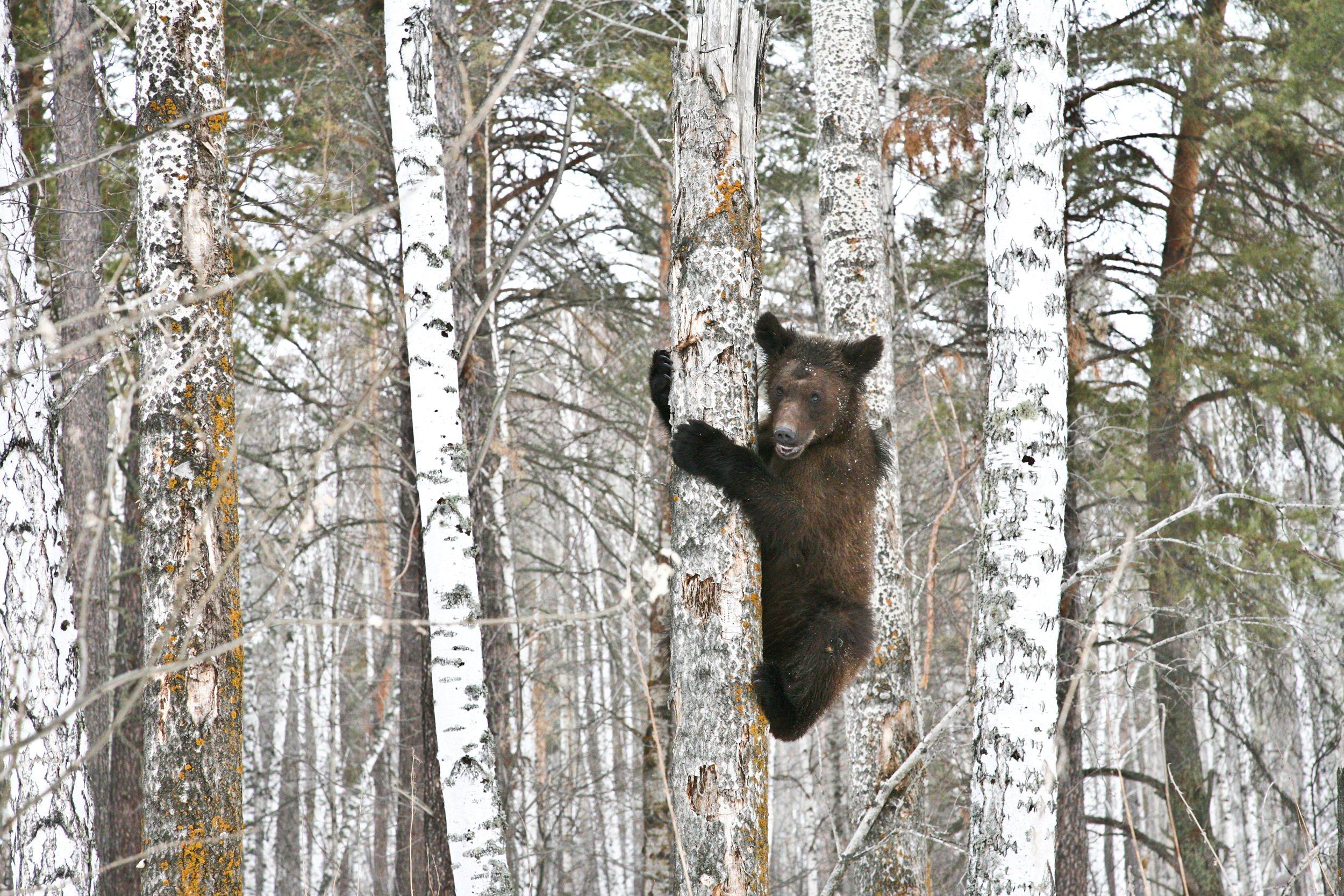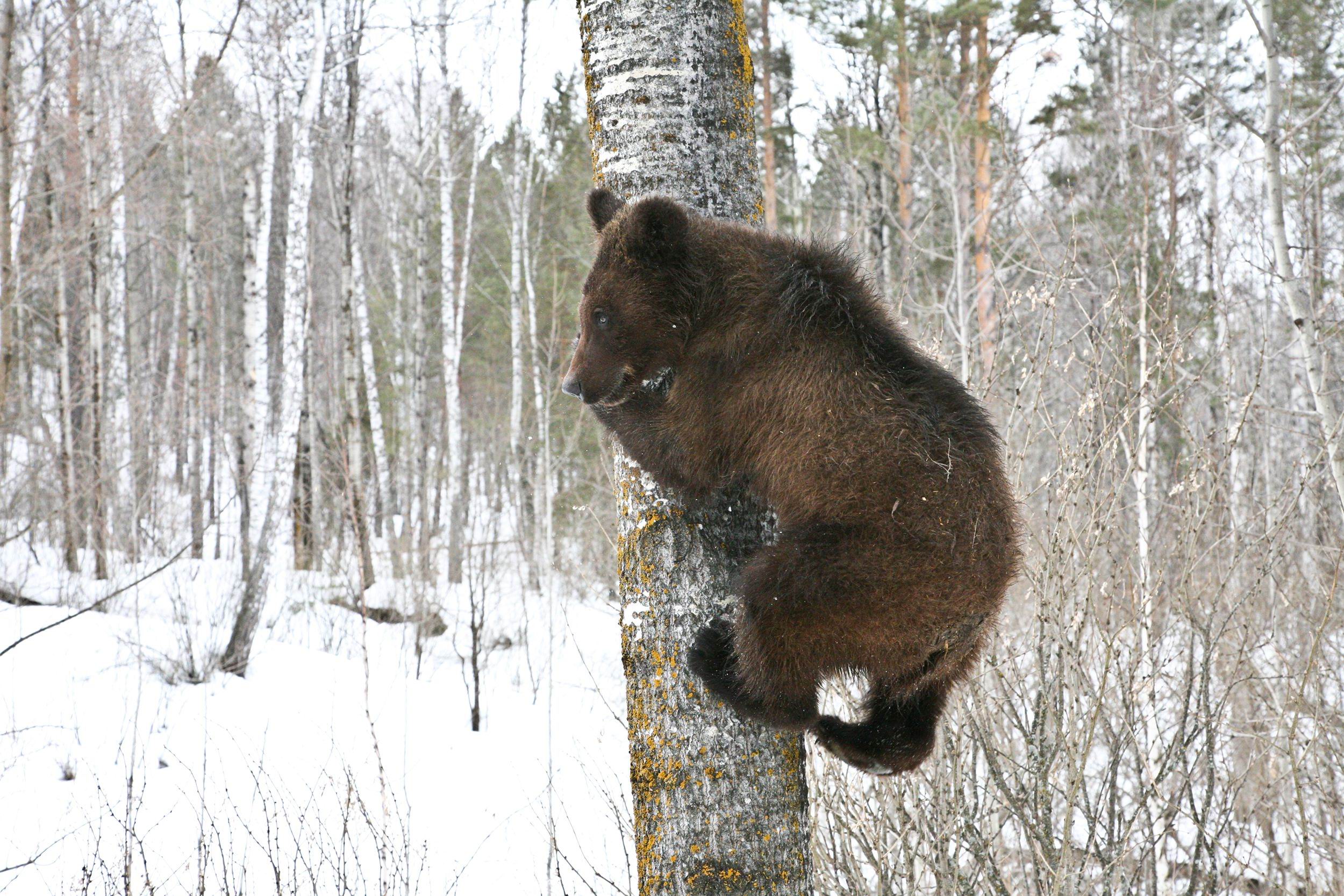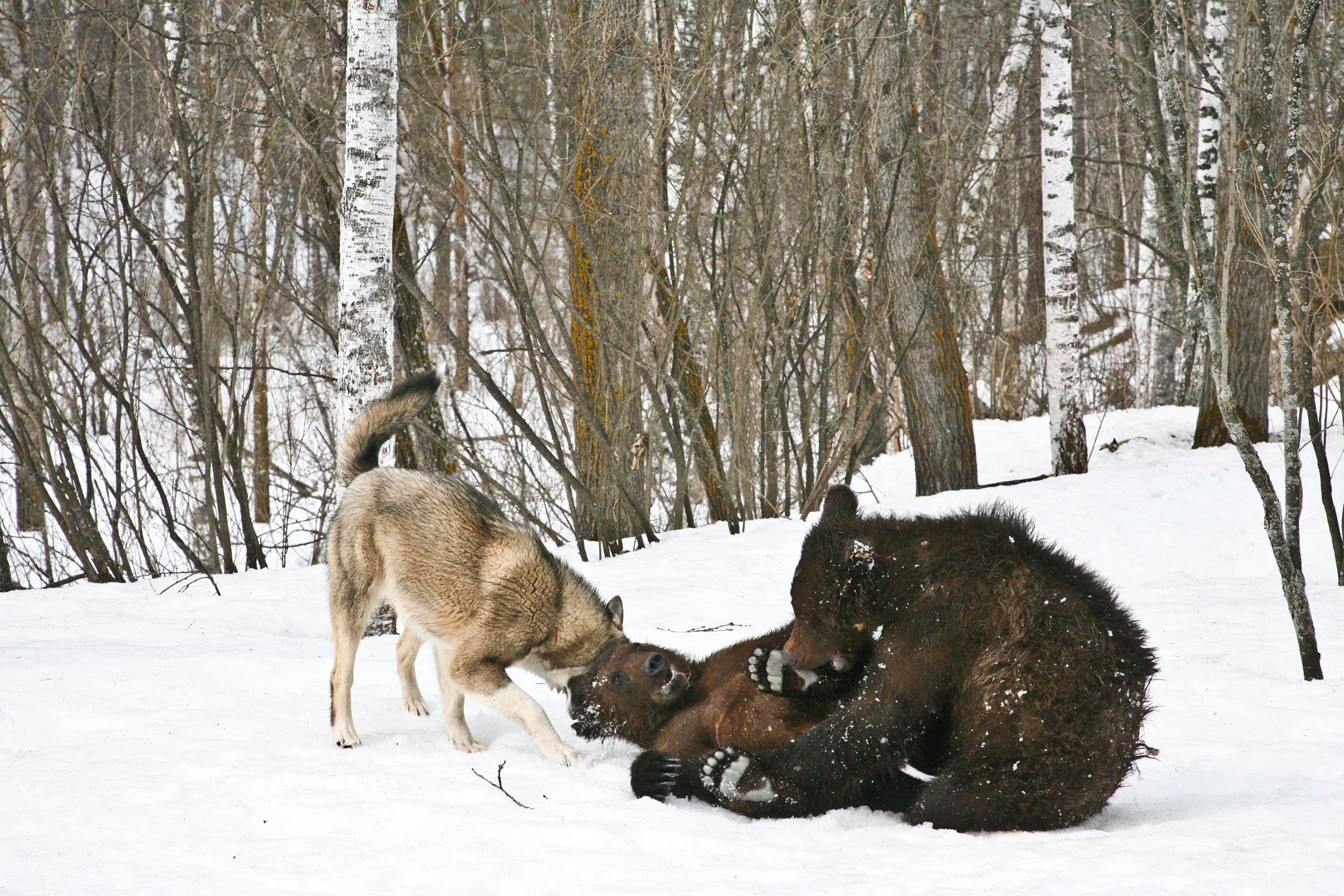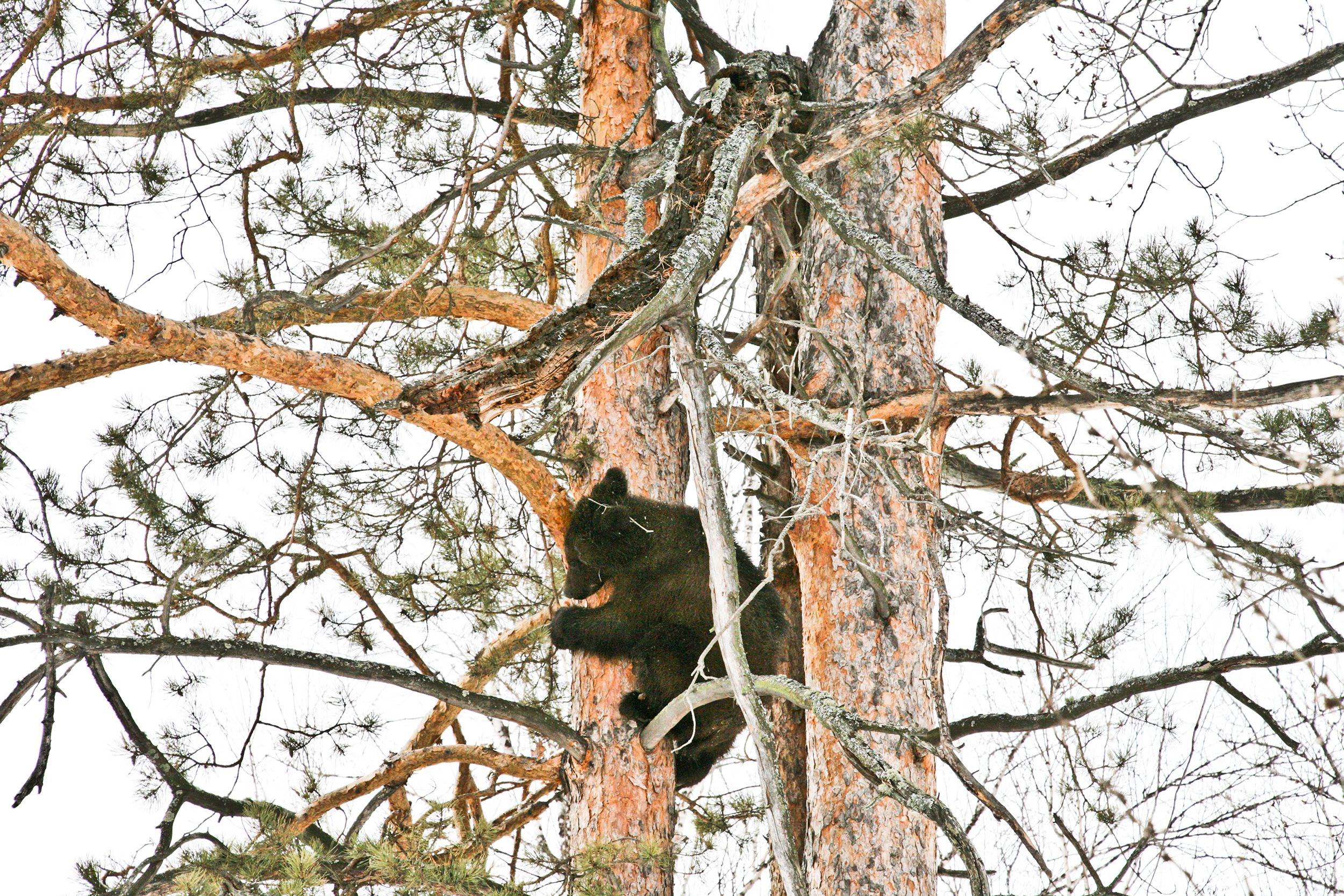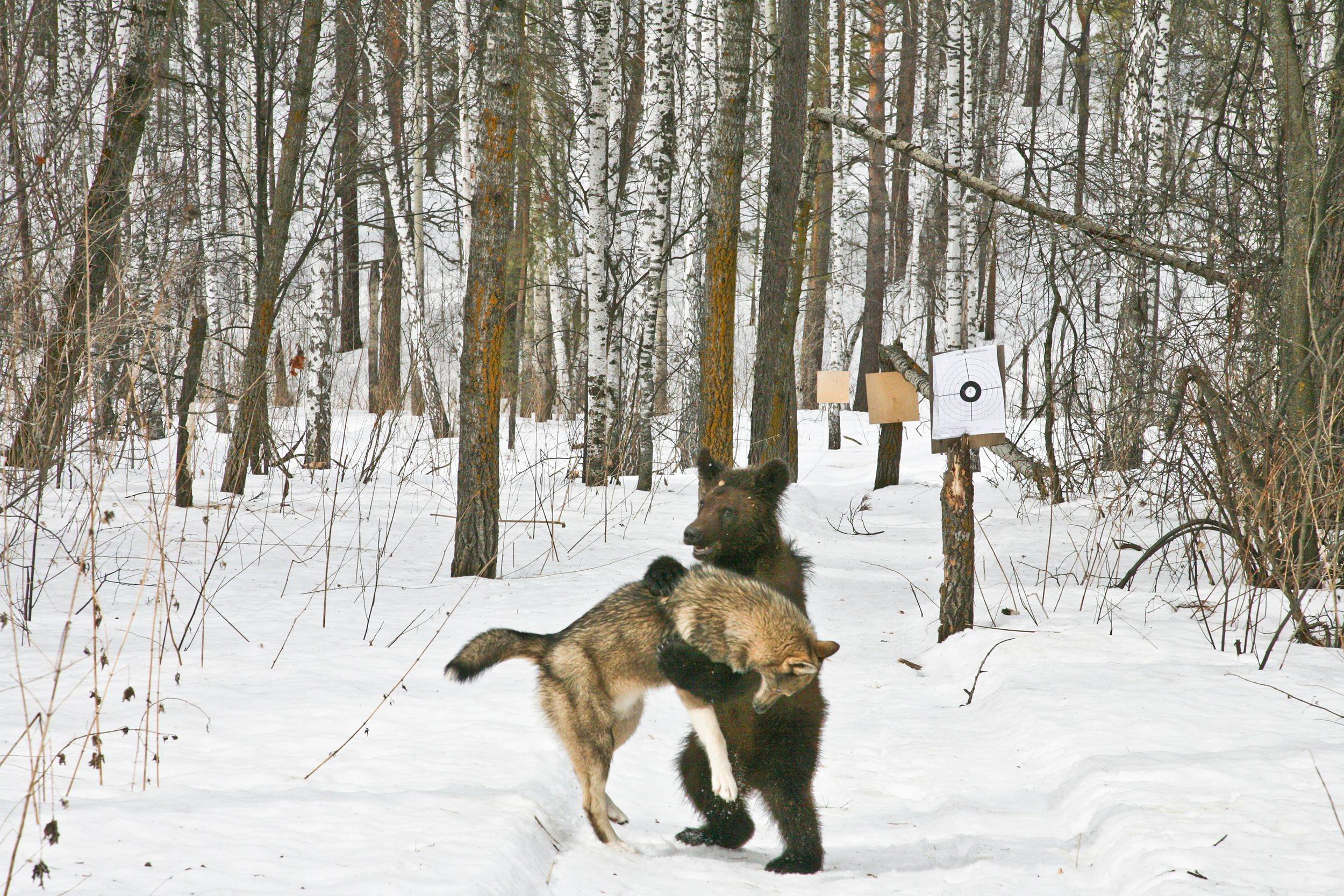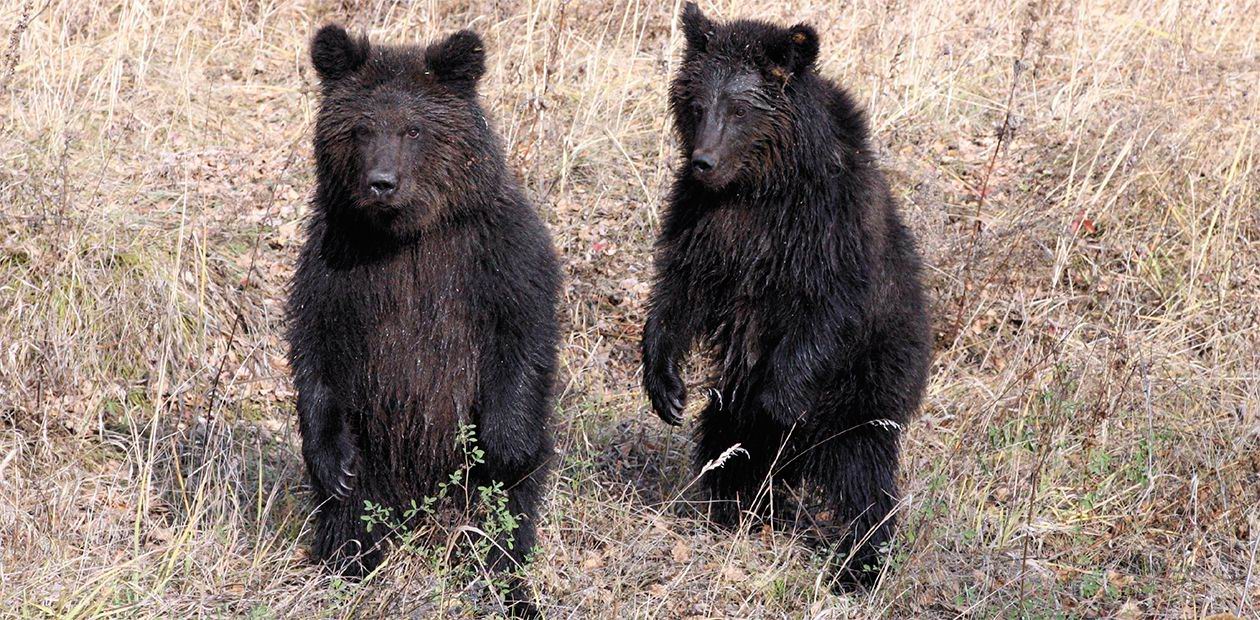The Most Russian of All Beasts
A bear has been Russia's long-standing national symbol: in all political caricatures, Russia is shown as a bear. The association holds not only because Russian politics has always been in line with the bears' nature but also because our country does have a record number of these animals.
Today, our readers are having an opportunity to get a closer look on this remarkable animal thanks to a series of photos accompanied with exciting facts of bears' "biography". The authors of this material have had a chance to travel extensively about the most difficult to access "bears' land" – the Kamchatka Peninsular – and to observe young bears reaching adulthood in the conditions very similar to natural
The land where “bears walk along the streets” – for the Westerners, such has been the symbol of this country for ages. The image of a bear has always emerged in propaganda when it came to controversy between Russia and the West, both before 1917 or at the time of nuclear confrontation during the cold war. “Russian bears” is the nickname of our boxers and fighters, and the famous Russian bomber TU-95 is referred to as “Bear” by its NATO designation.
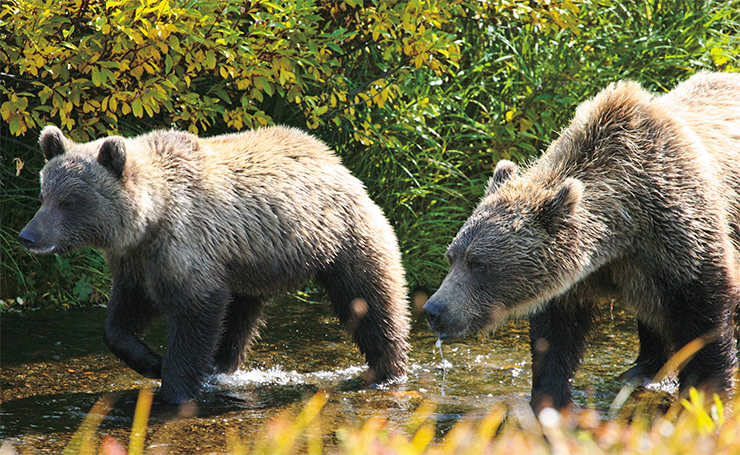
The Russian for “bear”, medved (possibly, “he who knows where honey is”) and other similar names common in everyday speech like Kosolapyi (“club-footed”) replaced the real taboo name of the animal, which was with time forgotten.
This powerful animal has been our long-standing national symbol: in all political caricatures, Russia is shown as a bear. The association holds not only because Russian politics has always been in line with the bears’ nature but also because our country does have a record number of these animals.
Today, our readers are having an opportunity to get a closer look on this remarkable animal thanks to a series of photos accompanied with exciting facts of bears’ “biography”. The authors of this material have had a chance to travel extensively about the most difficult to access “bears’ land” – the Kamchatka Peninsular – and to observe young bears reaching adulthood in the conditions very similar to natural.
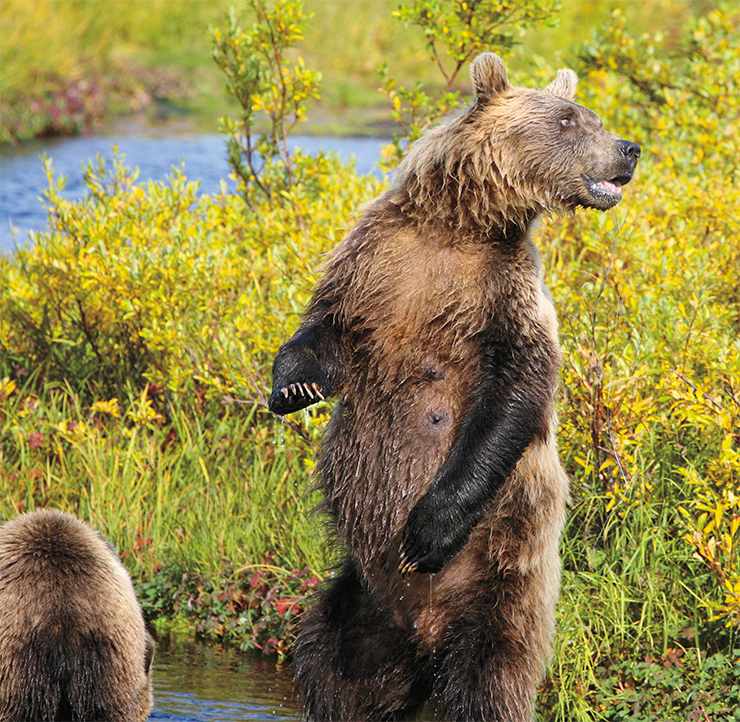
The legendary North American grizzly, the giant Kodiak bear of Alaska, the small Mazaalai living in deserts, and the inhabitant of Mid-Russian forests are all subspecies of the same species, brown bear (Ursus arctos), the most common of large land predators. Brown bears inhabit vast areas from the steppes to the highlands, mainly in the Northern hemisphere: Alaska, Canada, Tibet, Himalayas, north-eastern China, Korea, Mongolia, and Japan (Hokkaido)... A small number of brown bears have survived in Europe, predominantly in mountainous regions like the Tatra Mountains, Pyrenees, and Balkan Peninsular.
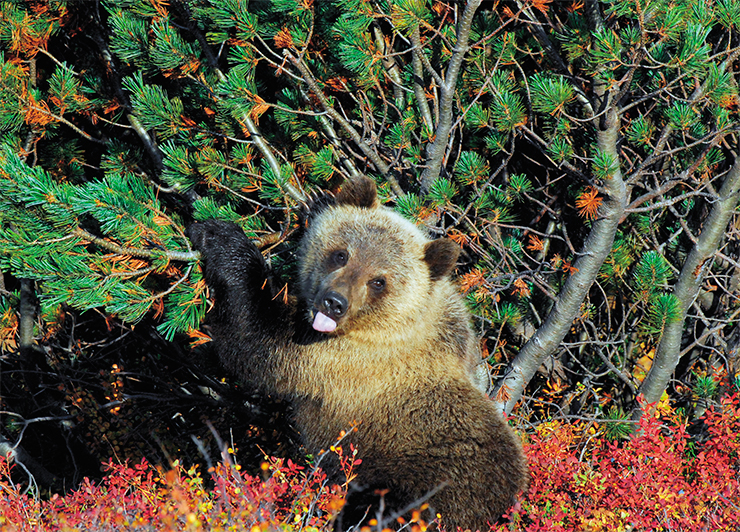
In Russia, brown bears occur everywhere where there are forests: from the western border to the Bering Sea, Sea of Okhotsk, and Sea of Japan. In the Russian north-east, one can come across these animals as far to the north as the tundra, up to the Arctic Ocean shore. The largest animals live in the east, along the coastlines of the Pacific Ocean seas, from Kamchatka to the Russian Far East.
All in all, there are about 200,000 brown bears in the world; 120,000 of them are in Russia, 33,000 in the USA, 21,000 in Canada, and 14,000 in Europe. The large number of bears and their wide range can be attributed to their omnivorism and ability to get along with people.
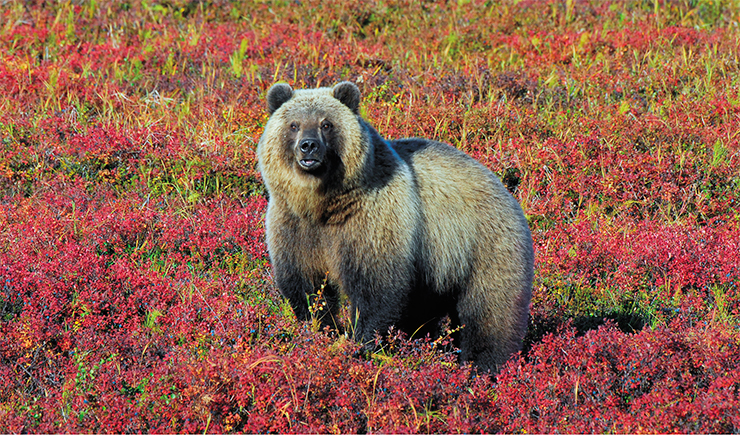
The latter is especially surprising taken the animals’ size: ordinary forest bears weigh up to six, and Kamchatka and Kodiak bears up to eight or ten hundredweights. The record-holder Kodiak caught for the Berlin Zoo weighed over a ton! In summer 2009, a grizzly was shot on Alaska, which had killed and eaten two tourists. It weighed 726 kilograms. When it stood on its hind legs, it was over 4 meters tall, that is, the head of an adult man would just reach the lower part of its abdomen.
And yet the brown bears’ cannibalism is an exception rather than a rule. It is not without reason that the great connoisseur of animals Alfred Brehm noted that bears are of “chivalrous nature devoid of any cunningness or deception. Incapable of cheating, they work their way by force and, unlike wolves, do not resort to unreasonable cruelty. At the heart of the bears’ temper is sluggishness and love for calmness”. The brown bear, dispassionate by nature, is known to go into a rage only if it is teased; distrustful and whole-hearted in her courage is a she-bear protecting her cubs.
Next to Gods
Down the ages, man has come across brown bears more than once. Evidence for this is so extensive that we can dwell on just a few facts here.
In the primitive times, the bear became a cult animal embodying strength and fearlessness. Moreover, many nationalities regarded him the ancestor of humans, their senior relation, the creature that personifies the connection between the sky and the earth.
Bears have an excellent hearing and sense of smell but comparatively weak eyesight. Their five-fingered paws are equipped with up to 15-centimeter claws. The animals are very strong – a bear can break a bull’s back with a single stroke. This is why they have no natural enemies (very occasionally, a young bear can be attacked by a pack of wolves). In the Russian Far East, fights between a bear and a tiger have been recorded, the outcome depending on the size and experience of the animals.Bears begin to reproduce when they are three or four years old. Females are in heat from May to July, and bear cubs are born in the lair from January to March. Adult males keep on their own while females go together with cubs and young weaned bears.
Bears’ territories range from 70 to 400 km2. The borders are drawn with scratches on the trees and scent marking. Bears like to live next to the water and can cross water bodies stretching many kilometers. In the winter, they hibernate from 2.5 to 6.5 months. Their sleep, however, in contrast to hibernation of, say, ground squirrels, is not deep and the body temperature does not drop dramatically. Bear lairs are normally arranged in chosen locations not frequented by people; real bear towns can be set up there. They once found in the Altai 26 lairs within the area of 1 km2! Not surprisingly, this animal capable of putting up such cozy winter headquarters has become a symbol of far-sightedness.
In days gone by, when bears were common in Europe, their image became part and parcel of European culture. Thus, in the ancient world, a brown bear was associated with the virgin goddess of hunt, mountains, and forests, and the patron of wild animals Artemis (Diana in Roman mythology). Together with other animals, bears belonged to the goddess’s suite; tamed bears used to be kept at temples in her honor. In Attica, priestesses participating in Artemis’ rituals would wear bear skins and call themselves she-bears.
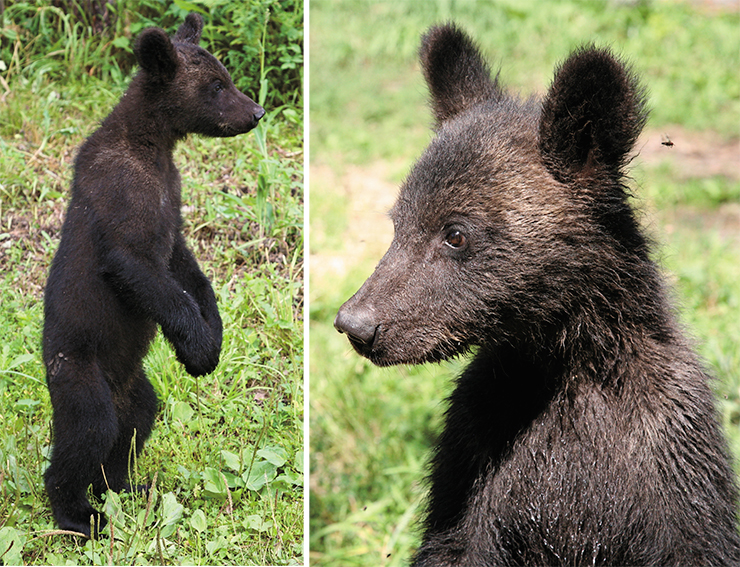
Celts’ and Old Germans’ religious beliefs were closely tied with the bear...This mighty animal was an embodiment of the Scandinavian god Odin: frenzied warriors, berserkers (derivative of “ber”, a bear), were dressed in bear skins, and their enemies would mistake them for bear turnskins.
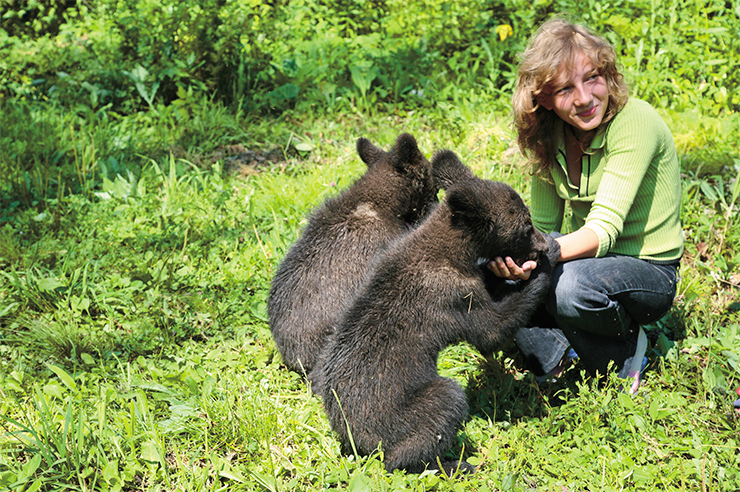
A bear was the most worshipped animal of Ancient Slavs. In the pagan times, it was associated with the god Volos, patron of domestic animals. In the Slavic folklore a bear was the totem personifying a man: father, husband, or fiance. It was no accident that legends about turnskin bears appeared: it was believed that people could be turned into bears for misbehavior – no wonder the feet and toes of these animals resembled the humans’.
Bears were mentioned in the Bible, with ambiguous interpretation: David fought this ferocious animal but the bears fell down before Saint Euphemia instead of tearing her to pieces.
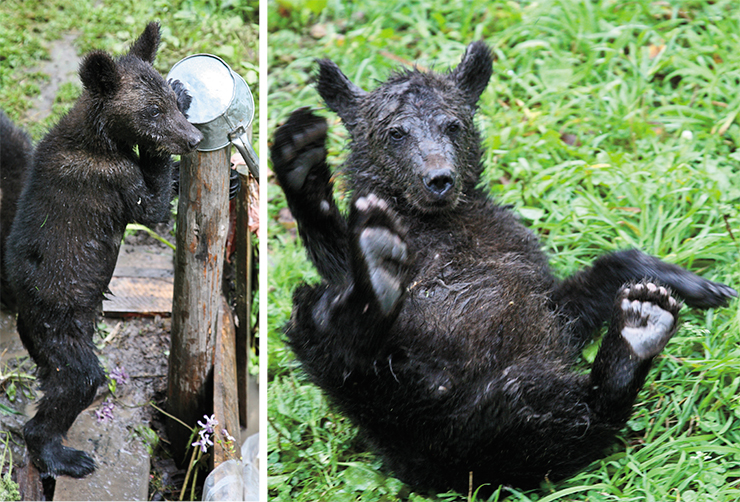
In medieval heraldry the bear became a symbol of strength, clumsiness and kindheartedness. In European countries you can see it on heraldic images put on house walls and on the roofs of catholic cathedrals to grant protection (together with chimeras) against evil spirits. The image of a bear is reflected not only on the coats-of-arms of many European (and Russian) cities but also in their names, such as Berlin and Bern.
Bear Russia
A bear is a noteworthy figure of the Russian culture: it acts in many folk tales and fairy tales, proverbs, sayings, and literary fiction works, often as the main character.
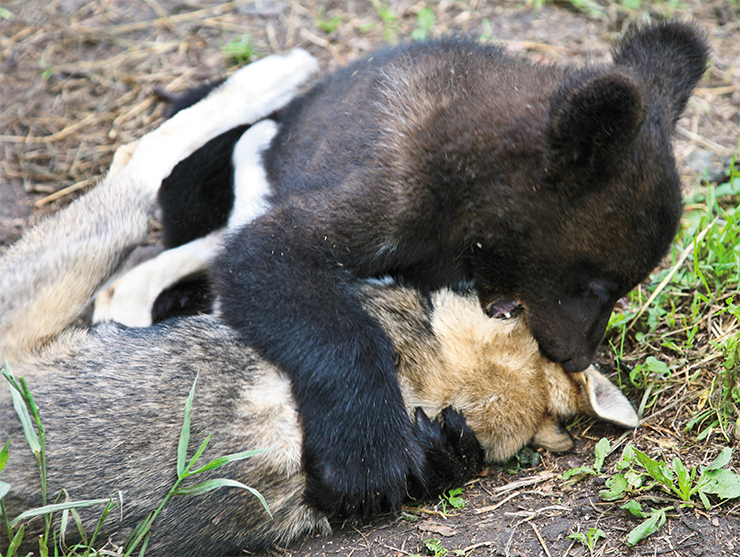
There is a good reason for this: for a Russian person a bear has always been an important though ambiguous symbol. On the one hand, since ancient times bears have been treated with respect and given human names (“Misha”). Having killed a bear, the hunter sought to secure himself by punishing the fork with which the animal was killed. A Russian hunter would apologize to the killed animal and say: “It was not me who killed you but a Tungus (Evenki).” Villagers would often keep bear cubs for fun, and children would play “bear games”. Chained bears would be taken around villages for entertainment.
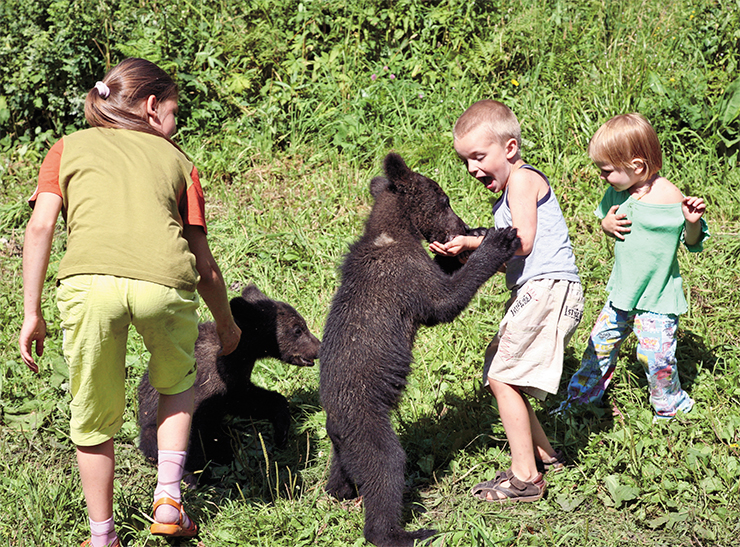
On the other hand, bears were dreaded. Small wonder: if we can come across four- or five-meter-tall giants even today, such encounters must have been much more frequent in the old days! This fear generated stories about wood demons and evil spirits. People sought to protect themselves against the dangerous bear with magic and amulets, they dreamed about becoming relatives with him.
Russian mythology puts an emphasis on the bears’ hypersexuality – the animals are considered to be well-disposed to women, who they attack to take them to their lairs and cohabit with them. According to legends, the progeny of such “marriage” is bogatyrs (epic heroes). It is not for nothing that in ancient Slavic wedding rituals the bride and the groom were called a he-bear and a she-bear. At Christmastide a young guy was dressed as a bear – he would go around guisers and prey on young girls.
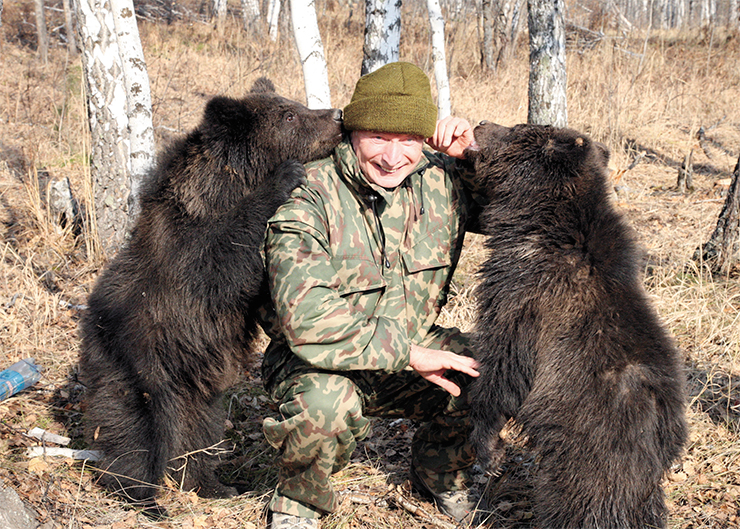
• To see a bear in your dream portends an uneasy time ahead of you, or a struggle. This may be a warning that, because of your rude and tactless manners, you risk acquiring a dangerous and cruel but not too cunning enemy.
• If a woman dreams of a bear, a strong rival will come across her way.
• Running away from a bear in your sleep is a precursor of risky romantic adventures in an unorthodox environment.
• A wounded bear in your sleep indicates that you have problems in communicating with the opposite sex and may become a victim of evil-eyed gossipers.
On the other hand, there are some positive interpretations as well:
• Seeing a bear in a sleep means getting a profit.
• Killing a bear in your sleep portends coping successfully with a difficult situation.
• If a woman sees a bear in her sleep, she will get married or have a new friend.
• A girl who caresses a bear in their sleep will soon get married.
• To see a bear with cubs foretells a benefit and higher income. The same dream, however, may mean that you don’t go gently with your children.
Psychiatrists who treat women belonging to the Russian culture are well aware of dreams in which acts a “horrible bear”. This scary image is often present in the dreams of female patients who have problems with their relatives or difficulties in the sexual sphere. Sometimes, a bear turns into the patient’s father, which normally means that the patients’ parents are on bad terms. The Russian women afflicted with neurosis demonstrate an association between the image of the frightening beast and fear of men. Interestingly, the phenomenon of “dreaming of a bear” is not new at all: Tatiana Larina in Pushkin’s Eugene Onegin had a dream in which she saw a horrible bear: he caught her and took to a log cabin, where Onegin and evil spirits were waiting.
In the 21st Century
Modern Russians come across the image of a bear since their childhood – they listen to fairy tales about bears and watch cartoons. Soft fluffy teddy bears are among favorite toys – kids play and sleep with them. As they grow, children continue to treat bears in the same way, as kind and innocent teddy bears. However, how true to life is this attitude?
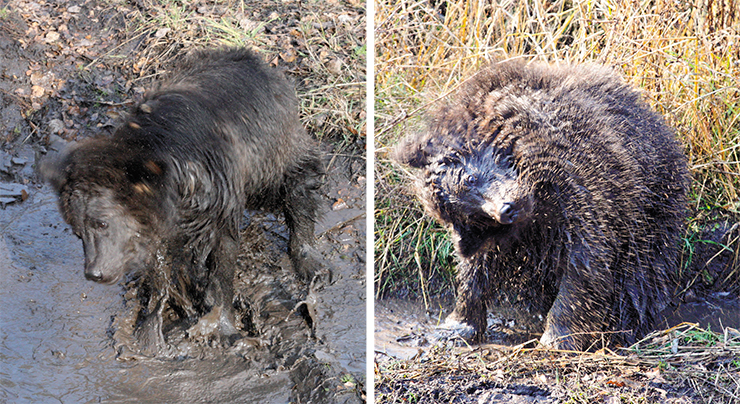
Today, bears are often kept in zoos; they gather crowds of children. And yet, workers of zoos and circuses think that bears are the most dangerous predators because they are unpredictable and incredibly strong.
First, when dealing with humans, the animal may not realize how strong it is – a good-natured box on the ear that bears playfully give to each other may cost a man his life. Note that even the smallest of bears can defeat the biggest of men. The second distinctive feature of a bear is its great patience. It may put up with pestering for a long time but suddenly get angry and hit the harasser with its paw. And the stroke will be as quick as lightning...
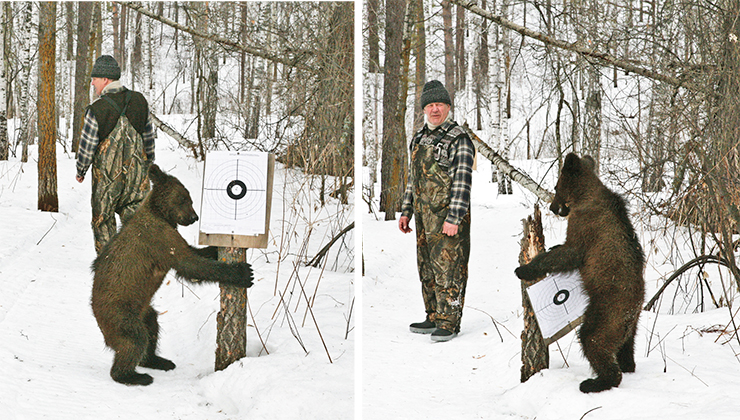
There are a lot of bears in Russia so far, and it is allowed to hunt them. However, all over Russia, including Siberia, the number of motorways is steadily increasing; hunters have mounted snowmobiles and are equipped with powerful guns. In the recent years, poor harvest of bears’ foods in the taiga has caused massive migrations and even numerous deaths among these animals. Habitats fit for bears are becoming scarcer.
The bear population of Kamchatka has been decimated. Foreign hunters striving for trophies kill the biggest animals, and local shooting fans do not lag behind. On Kamchatka the main means of transport is a helicopter; since the landscape is mostly a stretch of open country, the animals have nowhere to hide. Moreover, they make no attempt at hiding – these peaceful giants have not learned to beware of people yet.
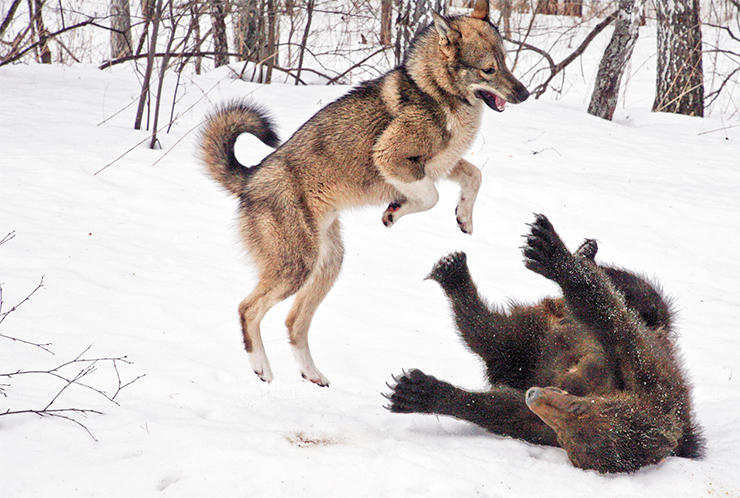
BEAR FAIRY TALES
Russian fairy tales, fables, and proverbs portray bears as strong, simple and even somewhat stupid creatures.Thus in the fable by I. A. Krylov The Hermit and the Bear the bear, eager to do a favor to his sleeping friend, hits a fly on his head with a rock. In the fairy-tale Masha and the Bear the simple-minded animal is easily deceived by a little girl. Generally speaking, in Russian, Norwegian, and German tales about animals, bears get often deceived by people, birds, and other beasts.
On the other hand, numerous fairy-tales and myths created by the peoples of North-Eastern Asia and North America highlight kin relations between man and a bear.
This is a typical plot of Evenki, Nanais and Chukchi fairy-tales: because of a set of circumstances a woman finds herself in a forest, where a bear takes her as his wife, and she subsequently gives birth to bear cubs or strong boys. Another plot goes that a man marries a she-bear who takes the appearance of a girl, and later she gives birth to a cub and a boy.
Northern nationalities have quite many stories of the animal giving a hand to a man. For example, a bear helps the hunters who have got into trouble; a she-bear picks up kids who have lost their parents, brings them up, and returns to people. Sometimes, it is the other way round: a man helps a bear, for example, a woman raises an orphaned bear cub, which subsequently looks after her.
It goes without saying that everybody knows heroes of modern western fairy-tales: Winnie-the-Pooh, the Disney Teddy and Balu. Kind-hearted and clumsy, they do not always sparkle with wit but unfailingly win our affection.
A remarkable alternative to conventional hunting is photo shooting, which is both more challenging and more exciting. To make a good shot, the photographer has to be 15—20 meters away from the animal. This approximately is the distance that a bear perceives as threatening and to which it will react depending on the circumstances and personal experience.
On the average, one professional photographer a year ends his/her life when shooting photos of bears in wilderness. However, is it always the animal’s fault? Not many people will sneak up to a sleeping tiger or slink 20 meters away from a family of lions. For some reason people tend to approach a bear fearlessly, and the “nasty” behavior of the scared animal comes as a complete surprise.
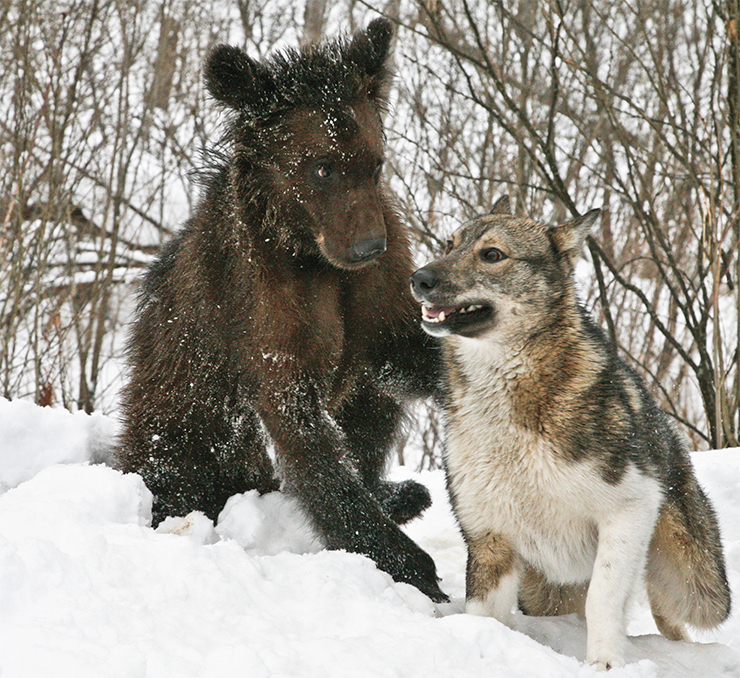
Tourists generate heaps of food waste; these attract bears to their camps, which results in clashes with a predictable outcome. Even though it is advised against trying to make friends with bear cubs as no mother bear would approve of it, people persist in communicating with these cute and “helpless” laggards, turning a blind eye to danger.
Bear cubs often come to people’s hands as a result of hunting bear lairs. Therefore, zoos of this country abound in bears, and hunters themselves often have to keep the cubs for quite some time. Bear cubs under a year old are sweet and charming, friendly and shy. They can spend hours playing with people and domestic animals. Only when they are two years old, they become dangerous.
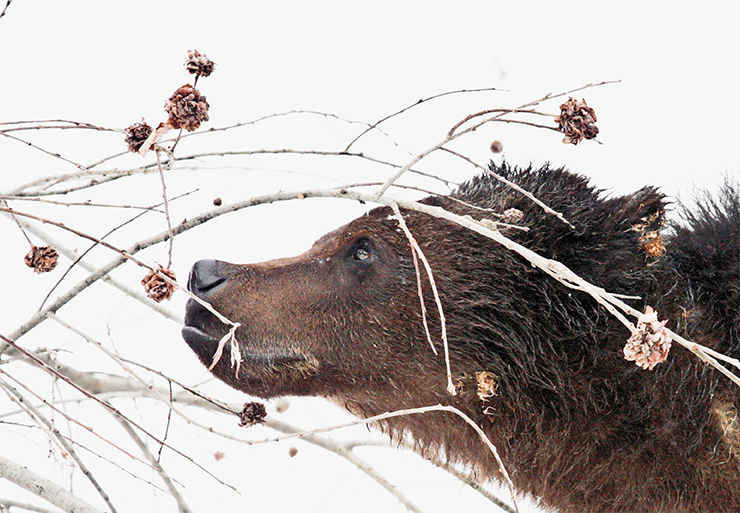
As luck would have it, for two years we observed a couple of bear cubs living at a hunting farm, virtually at large. The bear cubs and dogs played their games that looked like fights to us. However, they would never do harm to each other: the paws of a bear can be very delicate unless the animal is put in a temper or scared.
So do not believe those who tell you horror stories about malicious bears. These animals are the ornament to Russian forests, our true younger brothers, who claim respect and, ultimately, need to be protected.
